Writing an Abstract for Your Research Paper

Definition and Purpose of Abstracts
An abstract is a short summary of your (published or unpublished) research paper, usually about a paragraph (c. 6-7 sentences, 150-250 words) long. A well-written abstract serves multiple purposes:
- an abstract lets readers get the gist or essence of your paper or article quickly, in order to decide whether to read the full paper;
- an abstract prepares readers to follow the detailed information, analyses, and arguments in your full paper;
- and, later, an abstract helps readers remember key points from your paper.
It’s also worth remembering that search engines and bibliographic databases use abstracts, as well as the title, to identify key terms for indexing your published paper. So what you include in your abstract and in your title are crucial for helping other researchers find your paper or article.
If you are writing an abstract for a course paper, your professor may give you specific guidelines for what to include and how to organize your abstract. Similarly, academic journals often have specific requirements for abstracts. So in addition to following the advice on this page, you should be sure to look for and follow any guidelines from the course or journal you’re writing for.
The Contents of an Abstract
Abstracts contain most of the following kinds of information in brief form. The body of your paper will, of course, develop and explain these ideas much more fully. As you will see in the samples below, the proportion of your abstract that you devote to each kind of information—and the sequence of that information—will vary, depending on the nature and genre of the paper that you are summarizing in your abstract. And in some cases, some of this information is implied, rather than stated explicitly. The Publication Manual of the American Psychological Association , which is widely used in the social sciences, gives specific guidelines for what to include in the abstract for different kinds of papers—for empirical studies, literature reviews or meta-analyses, theoretical papers, methodological papers, and case studies.
Here are the typical kinds of information found in most abstracts:
- the context or background information for your research; the general topic under study; the specific topic of your research
- the central questions or statement of the problem your research addresses
- what’s already known about this question, what previous research has done or shown
- the main reason(s) , the exigency, the rationale , the goals for your research—Why is it important to address these questions? Are you, for example, examining a new topic? Why is that topic worth examining? Are you filling a gap in previous research? Applying new methods to take a fresh look at existing ideas or data? Resolving a dispute within the literature in your field? . . .
- your research and/or analytical methods
- your main findings , results , or arguments
- the significance or implications of your findings or arguments.
Your abstract should be intelligible on its own, without a reader’s having to read your entire paper. And in an abstract, you usually do not cite references—most of your abstract will describe what you have studied in your research and what you have found and what you argue in your paper. In the body of your paper, you will cite the specific literature that informs your research.
When to Write Your Abstract
Although you might be tempted to write your abstract first because it will appear as the very first part of your paper, it’s a good idea to wait to write your abstract until after you’ve drafted your full paper, so that you know what you’re summarizing.
What follows are some sample abstracts in published papers or articles, all written by faculty at UW-Madison who come from a variety of disciplines. We have annotated these samples to help you see the work that these authors are doing within their abstracts.
Choosing Verb Tenses within Your Abstract
The social science sample (Sample 1) below uses the present tense to describe general facts and interpretations that have been and are currently true, including the prevailing explanation for the social phenomenon under study. That abstract also uses the present tense to describe the methods, the findings, the arguments, and the implications of the findings from their new research study. The authors use the past tense to describe previous research.
The humanities sample (Sample 2) below uses the past tense to describe completed events in the past (the texts created in the pulp fiction industry in the 1970s and 80s) and uses the present tense to describe what is happening in those texts, to explain the significance or meaning of those texts, and to describe the arguments presented in the article.
The science samples (Samples 3 and 4) below use the past tense to describe what previous research studies have done and the research the authors have conducted, the methods they have followed, and what they have found. In their rationale or justification for their research (what remains to be done), they use the present tense. They also use the present tense to introduce their study (in Sample 3, “Here we report . . .”) and to explain the significance of their study (In Sample 3, This reprogramming . . . “provides a scalable cell source for. . .”).
Sample Abstract 1
From the social sciences.
Reporting new findings about the reasons for increasing economic homogamy among spouses
Gonalons-Pons, Pilar, and Christine R. Schwartz. “Trends in Economic Homogamy: Changes in Assortative Mating or the Division of Labor in Marriage?” Demography , vol. 54, no. 3, 2017, pp. 985-1005.
![example of abstract in research paper “The growing economic resemblance of spouses has contributed to rising inequality by increasing the number of couples in which there are two high- or two low-earning partners. [Annotation for the previous sentence: The first sentence introduces the topic under study (the “economic resemblance of spouses”). This sentence also implies the question underlying this research study: what are the various causes—and the interrelationships among them—for this trend?] The dominant explanation for this trend is increased assortative mating. Previous research has primarily relied on cross-sectional data and thus has been unable to disentangle changes in assortative mating from changes in the division of spouses’ paid labor—a potentially key mechanism given the dramatic rise in wives’ labor supply. [Annotation for the previous two sentences: These next two sentences explain what previous research has demonstrated. By pointing out the limitations in the methods that were used in previous studies, they also provide a rationale for new research.] We use data from the Panel Study of Income Dynamics (PSID) to decompose the increase in the correlation between spouses’ earnings and its contribution to inequality between 1970 and 2013 into parts due to (a) changes in assortative mating, and (b) changes in the division of paid labor. [Annotation for the previous sentence: The data, research and analytical methods used in this new study.] Contrary to what has often been assumed, the rise of economic homogamy and its contribution to inequality is largely attributable to changes in the division of paid labor rather than changes in sorting on earnings or earnings potential. Our findings indicate that the rise of economic homogamy cannot be explained by hypotheses centered on meeting and matching opportunities, and they show where in this process inequality is generated and where it is not.” (p. 985) [Annotation for the previous two sentences: The major findings from and implications and significance of this study.]](https://writing.wisc.edu/wp-content/uploads/sites/535/2019/08/Abstract-1.png)
Sample Abstract 2
From the humanities.
Analyzing underground pulp fiction publications in Tanzania, this article makes an argument about the cultural significance of those publications
Emily Callaci. “Street Textuality: Socialism, Masculinity, and Urban Belonging in Tanzania’s Pulp Fiction Publishing Industry, 1975-1985.” Comparative Studies in Society and History , vol. 59, no. 1, 2017, pp. 183-210.
![example of abstract in research paper “From the mid-1970s through the mid-1980s, a network of young urban migrant men created an underground pulp fiction publishing industry in the city of Dar es Salaam. [Annotation for the previous sentence: The first sentence introduces the context for this research and announces the topic under study.] As texts that were produced in the underground economy of a city whose trajectory was increasingly charted outside of formalized planning and investment, these novellas reveal more than their narrative content alone. These texts were active components in the urban social worlds of the young men who produced them. They reveal a mode of urbanism otherwise obscured by narratives of decolonization, in which urban belonging was constituted less by national citizenship than by the construction of social networks, economic connections, and the crafting of reputations. This article argues that pulp fiction novellas of socialist era Dar es Salaam are artifacts of emergent forms of male sociability and mobility. In printing fictional stories about urban life on pilfered paper and ink, and distributing their texts through informal channels, these writers not only described urban communities, reputations, and networks, but also actually created them.” (p. 210) [Annotation for the previous sentences: The remaining sentences in this abstract interweave other essential information for an abstract for this article. The implied research questions: What do these texts mean? What is their historical and cultural significance, produced at this time, in this location, by these authors? The argument and the significance of this analysis in microcosm: these texts “reveal a mode or urbanism otherwise obscured . . .”; and “This article argues that pulp fiction novellas. . . .” This section also implies what previous historical research has obscured. And through the details in its argumentative claims, this section of the abstract implies the kinds of methods the author has used to interpret the novellas and the concepts under study (e.g., male sociability and mobility, urban communities, reputations, network. . . ).]](https://writing.wisc.edu/wp-content/uploads/sites/535/2019/08/Abstract-2.png)
Sample Abstract/Summary 3
From the sciences.
Reporting a new method for reprogramming adult mouse fibroblasts into induced cardiac progenitor cells
Lalit, Pratik A., Max R. Salick, Daryl O. Nelson, Jayne M. Squirrell, Christina M. Shafer, Neel G. Patel, Imaan Saeed, Eric G. Schmuck, Yogananda S. Markandeya, Rachel Wong, Martin R. Lea, Kevin W. Eliceiri, Timothy A. Hacker, Wendy C. Crone, Michael Kyba, Daniel J. Garry, Ron Stewart, James A. Thomson, Karen M. Downs, Gary E. Lyons, and Timothy J. Kamp. “Lineage Reprogramming of Fibroblasts into Proliferative Induced Cardiac Progenitor Cells by Defined Factors.” Cell Stem Cell , vol. 18, 2016, pp. 354-367.
![example of abstract in research paper “Several studies have reported reprogramming of fibroblasts into induced cardiomyocytes; however, reprogramming into proliferative induced cardiac progenitor cells (iCPCs) remains to be accomplished. [Annotation for the previous sentence: The first sentence announces the topic under study, summarizes what’s already known or been accomplished in previous research, and signals the rationale and goals are for the new research and the problem that the new research solves: How can researchers reprogram fibroblasts into iCPCs?] Here we report that a combination of 11 or 5 cardiac factors along with canonical Wnt and JAK/STAT signaling reprogrammed adult mouse cardiac, lung, and tail tip fibroblasts into iCPCs. The iCPCs were cardiac mesoderm-restricted progenitors that could be expanded extensively while maintaining multipo-tency to differentiate into cardiomyocytes, smooth muscle cells, and endothelial cells in vitro. Moreover, iCPCs injected into the cardiac crescent of mouse embryos differentiated into cardiomyocytes. iCPCs transplanted into the post-myocardial infarction mouse heart improved survival and differentiated into cardiomyocytes, smooth muscle cells, and endothelial cells. [Annotation for the previous four sentences: The methods the researchers developed to achieve their goal and a description of the results.] Lineage reprogramming of adult somatic cells into iCPCs provides a scalable cell source for drug discovery, disease modeling, and cardiac regenerative therapy.” (p. 354) [Annotation for the previous sentence: The significance or implications—for drug discovery, disease modeling, and therapy—of this reprogramming of adult somatic cells into iCPCs.]](https://writing.wisc.edu/wp-content/uploads/sites/535/2019/08/Abstract-3.png)
Sample Abstract 4, a Structured Abstract
Reporting results about the effectiveness of antibiotic therapy in managing acute bacterial sinusitis, from a rigorously controlled study
Note: This journal requires authors to organize their abstract into four specific sections, with strict word limits. Because the headings for this structured abstract are self-explanatory, we have chosen not to add annotations to this sample abstract.
Wald, Ellen R., David Nash, and Jens Eickhoff. “Effectiveness of Amoxicillin/Clavulanate Potassium in the Treatment of Acute Bacterial Sinusitis in Children.” Pediatrics , vol. 124, no. 1, 2009, pp. 9-15.
“OBJECTIVE: The role of antibiotic therapy in managing acute bacterial sinusitis (ABS) in children is controversial. The purpose of this study was to determine the effectiveness of high-dose amoxicillin/potassium clavulanate in the treatment of children diagnosed with ABS.
METHODS : This was a randomized, double-blind, placebo-controlled study. Children 1 to 10 years of age with a clinical presentation compatible with ABS were eligible for participation. Patients were stratified according to age (<6 or ≥6 years) and clinical severity and randomly assigned to receive either amoxicillin (90 mg/kg) with potassium clavulanate (6.4 mg/kg) or placebo. A symptom survey was performed on days 0, 1, 2, 3, 5, 7, 10, 20, and 30. Patients were examined on day 14. Children’s conditions were rated as cured, improved, or failed according to scoring rules.
RESULTS: Two thousand one hundred thirty-five children with respiratory complaints were screened for enrollment; 139 (6.5%) had ABS. Fifty-eight patients were enrolled, and 56 were randomly assigned. The mean age was 6630 months. Fifty (89%) patients presented with persistent symptoms, and 6 (11%) presented with nonpersistent symptoms. In 24 (43%) children, the illness was classified as mild, whereas in the remaining 32 (57%) children it was severe. Of the 28 children who received the antibiotic, 14 (50%) were cured, 4 (14%) were improved, 4(14%) experienced treatment failure, and 6 (21%) withdrew. Of the 28children who received placebo, 4 (14%) were cured, 5 (18%) improved, and 19 (68%) experienced treatment failure. Children receiving the antibiotic were more likely to be cured (50% vs 14%) and less likely to have treatment failure (14% vs 68%) than children receiving the placebo.
CONCLUSIONS : ABS is a common complication of viral upper respiratory infections. Amoxicillin/potassium clavulanate results in significantly more cures and fewer failures than placebo, according to parental report of time to resolution.” (9)
Some Excellent Advice about Writing Abstracts for Basic Science Research Papers, by Professor Adriano Aguzzi from the Institute of Neuropathology at the University of Zurich:

Academic and Professional Writing
This is an accordion element with a series of buttons that open and close related content panels.
Analysis Papers
Reading Poetry
A Short Guide to Close Reading for Literary Analysis
Using Literary Quotations
Play Reviews
Writing a Rhetorical Précis to Analyze Nonfiction Texts
Incorporating Interview Data
Grant Proposals
Planning and Writing a Grant Proposal: The Basics
Additional Resources for Grants and Proposal Writing
Job Materials and Application Essays
Writing Personal Statements for Ph.D. Programs
- Before you begin: useful tips for writing your essay
- Guided brainstorming exercises
- Get more help with your essay
- Frequently Asked Questions
Resume Writing Tips
CV Writing Tips
Cover Letters
Business Letters
Proposals and Dissertations
Resources for Proposal Writers
Resources for Dissertators
Research Papers
Planning and Writing Research Papers
Quoting and Paraphrasing
Writing Annotated Bibliographies
Creating Poster Presentations
Thank-You Notes
Advice for Students Writing Thank-You Notes to Donors
Reading for a Review
Critical Reviews
Writing a Review of Literature
Scientific Reports
Scientific Report Format
Sample Lab Assignment
Writing for the Web
Writing an Effective Blog Post
Writing for Social Media: A Guide for Academics
- How it works
"Christmas Offer"
Terms & conditions.
As the Christmas season is upon us, we find ourselves reflecting on the past year and those who we have helped to shape their future. It’s been quite a year for us all! The end of the year brings no greater joy than the opportunity to express to you Christmas greetings and good wishes.
At this special time of year, Research Prospect brings joyful discount of 10% on all its services. May your Christmas and New Year be filled with joy.
We are looking back with appreciation for your loyalty and looking forward to moving into the New Year together.
"Claim this offer"
In unfamiliar and hard times, we have stuck by you. This Christmas, Research Prospect brings you all the joy with exciting discount of 10% on all its services.
Offer valid till 5-1-2024
We love being your partner in success. We know you have been working hard lately, take a break this holiday season to spend time with your loved ones while we make sure you succeed in your academics
Discount code: RP0996Y

How To Write A Research Paper Abstract | Steps And Examples
Published by Alvin Nicolas at September 23rd, 2024 , Revised On October 24, 2024
An abstract is written to pique a reader’s interest and if necessary, motivate them to leave the comfort of their home and get the full article or paper.
In simpler words, an abstract is a well-structured summary of your academic work, such as an article, research paper , thesis or dissertation. It outlines the most important aspects of your work and is about 300-500 words. Although the structure may vary from discipline to discipline, it is still a necessary part of academic writing.
Abstract Research Paper Definition
A research paper abstract is the face of the research paper. This means that it is what creates the first impression of the paper. It is the summary of the research paper and communicates the content quality and relevance. They exist with one vital purpose, and that is to sell your research. A reader quickly scrutinises and scans the abstract to gain an idea of your research, the problem statement addressed, the methodologies used and the results gained from it.
An abstract most commonly has the following parts:
- Introduction
Types of Abstracts In Research Paper
One of the main purposes of an abstract is to describe your paper. It can either be informative, descriptive, structured or unstructured. Let’s develop a common understanding of how research paper abstracts are written based on content and writing style.
Structured Abstract
Structured abstracts are mostly written in journals and have a separate paragraph for each section. Each part is organised and has distinct headings such as introduction/background, objective, design, methodologies, material, results and conclusion.
Unstructured Abstract
An unstructured abstract is mostly used in social sciences and humanities disciplines and does not have separate paragraphs for each section. It consists of one whole paragraph that serves as the face of the research paper.
Descriptive Abstract
A descriptive abstract only outlines the crucial details of the researcher’s publication. They are mostly short, consisting of 75-105 words. They briefly explain the background, mission statement, purpose and objective but omit the research methodologies, results and conclusions.
Informative Abstract
This abstract can be both structured and unstructured and provides detailed information on the research paper. This means that it is an extensive paragraph on each aspect of research and provides accurate data on each section, especially results.
How to Make Abstract In Research Paper
The abstract part of the research paper summarises the main points of the article. Whether you are applying for research grants, writing a thesis or dissertation or studying a research problem , it is necessary to know how to make a good abstract for a research paper. Here are some of the details on how to write a research paper abstract.
General Topic In Study
This section serves as the introduction to the research paper. It answers the questions of what is being studied or what problem statement is being addressed here. The hypothesis and purpose are highlighted within this section, setting the context for the rest of the research paper.
It is recommended to never go into detailed information as this part only offers initial information regarding the research. Also, this part is always written in the present or past tense, and never in the future as the research has been completed.
Our study’s main objective was to assess the photoprotective capability of chocolate consumption, by contrasting a simple dark chocolate with a specifically made chocolate with preserved high flavanol. According to the study’s hypothesis, eating chocolate induced with HF can provide nutritional defence against skin damage by the sun.
Research/Analytical Methods
Next, it is important to write the research methods used in the research. Either qualitative or quantitative methods, every aspect of them should be mentioned to give the reader a good idea of what scale, survey and sample was used within the research. Some questions that need to be answered in this paragraph are:
- What was the research setting?
- What was the sample size, and how were the participants sampled?
- What was the research method used?
- What was the primary outcome of the initial test?
- What questions or treatments were administered to the participants?
A double-blinded in vivo study was carried out, where 30 healthy adults participated in it. It included 8 males and 22 females between the age of 10 years to 43 years. Fifteen subjects each were given either an HF or LF chocolate and were divided based on their skin phototypes.
Results/ Arguments
This section can be both in present and past tense and must include the main findings of the study. It should be detailed and lengthy, giving all relevant results. These are the following questions this section of the abstract research paper must answer:
- What did the study yield?
- What were the results in comparison to the hypothesis ?
- What were the predictions and were the outcomes similar to it?
In conclusion, our research revealed that eating chocolate high in flavanol shields humans from damaging UV rays, mainly because of its anti-inflammatory and antioxidant properties. The research indicates that HF chocolate lessens the acute inflammatory response to UV rays, by regulating the synthesis of proinflammatory cytokines and nitric oxide.
Discussions
Finally, you should discuss the conclusions and the author’s thoughts on the research. Whether the hypothesis proved to be right or not is mostly discussed here, along with the limitations or complications encountered during the research. It is necessary to mention this as a reader must be aware of the credibility and generalisability of the research.
Our research concludes by showing that cocoa flavanols have the potential to be a safe natural method of shielding skin from UV damage.
Hire an Expert Writer
Orders completed by our expert writers are
- Formally drafted in an academic style
- Free Amendments and 100% Plagiarism Free – or your money back!
- 100% Confidential and Timely Delivery!
- Free anti-plagiarism report
- Appreciated by thousands of clients. Check client reviews

Research Paper Abstract Example
Here is an abstract example for research papers to help you understand how abstracts are written:
Does the lockdown have a role in stopping COVID-19?
Every day the coronavirus is spreading, with deaths and fatalities increasing day by day. This has led to a nationwide lockdown all over the world. Our study aims to study the effect of lockdown days on the spread of coronavirus in countries. COVID-19 data from 49 countries was gathered from www.worldometer.com. As of May 5, 2020, there were 1440776 approved active cases of COVID-19 from the countries included in this study. Data on COVID-19 days and lockdown days was obtained from the websites of the official institutions of these 49 countries. Moreover, the correlation test was used to analyse the associations between total COVID-19 cases and the lockdown days. The lockdown days were seen to be correlated to the COVID-19 pandemic. The social-isolation phenomenon; the lockdown has been seen to prevent COVID-19 and the spread of this deadly virus. There are several concerns about the ability of the national healthcare system to effectively manage COVID-19 patients. To slow down the spread of this virus, it is necessary to take the strictest of actions. Even though Italy and Spain have the highest death rates because of COVID-19, there has been a sudden drop in the rates because of the strict measures taken by the government.
Frequently Asked Questions
When should i write an abstract.
You should write an abstract when you are completing a thesis or dissertation, submitting a research design or applying for research grants. You can also write an abstract if you are writing a book
What are things to avoid while writing an abstract?
You should avoid using passive sentences and future tenses. Avoid detailed descriptions as an abstract is supposed to be just a summary. Complex jargon and complicated long sentences should also be avoided as they take away the reader’s interest. Lastly, always address your problem statement in a good way.
Should I cite sources in an abstract?
You should try to focus on showcasing your original work, rather than cite other work. Try to make your work as comprehensive and understanding so that your work is highlighted better.
You May Also Like
Struggling to find relevant and up-to-date topics for your dissertation? Here is all you need to know if unsure about how to choose dissertation topic.
Find how to write research questions with the mentioned steps required for a perfect research question. Choose an interesting topic and begin your research.
Not sure how to approach a company for your primary research study? Don’t worry. Here we have some tips for you to successfully gather primary study.
As Featured On

USEFUL LINKS
LEARNING RESOURCES

COMPANY DETAILS

Splash Sol LLC
- How It Works
How to Write an Abstract (With Examples)

By Sarah Oakley

Table of Contents
What is an abstract in a paper, how long should an abstract be, 5 steps for writing an abstract, examples of an abstract, how prowritingaid can help you write an abstract.
If you are writing a scientific research paper or a book proposal, you need to know how to write an abstract, which summarizes the contents of the paper or book.
When researchers are looking for peer-reviewed papers to use in their studies, the first place they will check is the abstract to see if it applies to their work. Therefore, your abstract is one of the most important parts of your entire paper.
In this article, we’ll explain what an abstract is, what it should include, and how to write one.
An abstract is a concise summary of the details within a report. Some abstracts give more details than others, but the main things you’ll be talking about are why you conducted the research, what you did, and what the results show.
When a reader is deciding whether to read your paper completely, they will first look at the abstract. You need to be concise in your abstract and give the reader the most important information so they can determine if they want to read the whole paper.
Remember that an abstract is the last thing you’ll want to write for the research paper because it directly references parts of the report. If you haven’t written the report, you won’t know what to include in your abstract.
If you are writing a paper for a journal or an assignment, the publication or academic institution might have specific formatting rules for how long your abstract should be. However, if they don’t, most abstracts are between 150 and 300 words long.
A short word count means your writing has to be precise and without filler words or phrases. Once you’ve written a first draft, you can always use an editing tool, such as ProWritingAid, to identify areas where you can reduce words and increase readability.
If your abstract is over the word limit, and you’ve edited it but still can’t figure out how to reduce it further, your abstract might include some things that aren’t needed. Here’s a list of three elements you can remove from your abstract:
Discussion : You don’t need to go into detail about the findings of your research because your reader will find your discussion within the paper.
Definition of terms : Your readers are interested the field you are writing about, so they are likely to understand the terms you are using. If not, they can always look them up. Your readers do not expect you to give a definition of terms in your abstract.
References and citations : You can mention there have been studies that support or have inspired your research, but you do not need to give details as the reader will find them in your bibliography.

Good writing = better grades
ProWritingAid will help you improve the style, strength, and clarity of all your assignments.
If you’ve never written an abstract before, and you’re wondering how to write an abstract, we’ve got some steps for you to follow. It’s best to start with planning your abstract, so we’ve outlined the details you need to include in your plan before you write.
Remember to consider your audience when you’re planning and writing your abstract. They are likely to skim read your abstract, so you want to be sure your abstract delivers all the information they’re expecting to see at key points.
1. What Should an Abstract Include?
Abstracts have a lot of information to cover in a short number of words, so it’s important to know what to include. There are three elements that need to be present in your abstract:
Your context is the background for where your research sits within your field of study. You should briefly mention any previous scientific papers or experiments that have led to your hypothesis and how research develops in those studies.
Your hypothesis is your prediction of what your study will show. As you are writing your abstract after you have conducted your research, you should still include your hypothesis in your abstract because it shows the motivation for your paper.
Throughout your abstract, you also need to include keywords and phrases that will help researchers to find your article in the databases they’re searching. Make sure the keywords are specific to your field of study and the subject you’re reporting on, otherwise your article might not reach the relevant audience.
2. Can You Use First Person in an Abstract?
You might think that first person is too informal for a research paper, but it’s not. Historically, writers of academic reports avoided writing in first person to uphold the formality standards of the time. However, first person is more accepted in research papers in modern times.
If you’re still unsure whether to write in first person for your abstract, refer to any style guide rules imposed by the journal you’re writing for or your teachers if you are writing an assignment.
3. Abstract Structure
Some scientific journals have strict rules on how to structure an abstract, so it’s best to check those first. If you don’t have any style rules to follow, try using the IMRaD structure, which stands for Introduction, Methodology, Results, and Discussion.

Following the IMRaD structure, start with an introduction. The amount of background information you should include depends on your specific research area. Adding a broad overview gives you less room to include other details. Remember to include your hypothesis in this section.
The next part of your abstract should cover your methodology. Try to include the following details if they apply to your study:
What type of research was conducted?
How were the test subjects sampled?
What were the sample sizes?
What was done to each group?
How long was the experiment?
How was data recorded and interpreted?
Following the methodology, include a sentence or two about the results, which is where your reader will determine if your research supports or contradicts their own investigations.
The results are also where most people will want to find out what your outcomes were, even if they are just mildly interested in your research area. You should be specific about all the details but as concise as possible.
The last few sentences are your conclusion. It needs to explain how your findings affect the context and whether your hypothesis was correct. Include the primary take-home message, additional findings of importance, and perspective. Also explain whether there is scope for further research into the subject of your report.
Your conclusion should be honest and give the reader the ultimate message that your research shows. Readers trust the conclusion, so make sure you’re not fabricating the results of your research. Some readers won’t read your entire paper, but this section will tell them if it’s worth them referencing it in their own study.
4. How to Start an Abstract
The first line of your abstract should give your reader the context of your report by providing background information. You can use this sentence to imply the motivation for your research.
You don’t need to use a hook phrase or device in your first sentence to grab the reader’s attention. Your reader will look to establish relevance quickly, so readability and clarity are more important than trying to persuade the reader to read on.
5. How to Format an Abstract
Most abstracts use the same formatting rules, which help the reader identify the abstract so they know where to look for it.
Here’s a list of formatting guidelines for writing an abstract:
Stick to one paragraph
Use block formatting with no indentation at the beginning
Put your abstract straight after the title and acknowledgements pages
Use present or past tense, not future tense
There are two primary types of abstract you could write for your paper—descriptive and informative.
An informative abstract is the most common, and they follow the structure mentioned previously. They are longer than descriptive abstracts because they cover more details.
Descriptive abstracts differ from informative abstracts, as they don’t include as much discussion or detail. The word count for a descriptive abstract is between 50 and 150 words.
Here is an example of an informative abstract:
A growing trend exists for authors to employ a more informal writing style that uses “we” in academic writing to acknowledge one’s stance and engagement. However, few studies have compared the ways in which the first-person pronoun “we” is used in the abstracts and conclusions of empirical papers. To address this lacuna in the literature, this study conducted a systematic corpus analysis of the use of “we” in the abstracts and conclusions of 400 articles collected from eight leading electrical and electronic (EE) engineering journals. The abstracts and conclusions were extracted to form two subcorpora, and an integrated framework was applied to analyze and seek to explain how we-clusters and we-collocations were employed. Results revealed whether authors’ use of first-person pronouns partially depends on a journal policy. The trend of using “we” showed that a yearly increase occurred in the frequency of “we” in EE journal papers, as well as the existence of three “we-use” types in the article conclusions and abstracts: exclusive, inclusive, and ambiguous. Other possible “we-use” alternatives such as “I” and other personal pronouns were used very rarely—if at all—in either section. These findings also suggest that the present tense was used more in article abstracts, but the present perfect tense was the most preferred tense in article conclusions. Both research and pedagogical implications are proffered and critically discussed.
Wang, S., Tseng, W.-T., & Johanson, R. (2021). To We or Not to We: Corpus-Based Research on First-Person Pronoun Use in Abstracts and Conclusions. SAGE Open, 11(2).
Here is an example of a descriptive abstract:
From the 1850s to the present, considerable criminological attention has focused on the development of theoretically-significant systems for classifying crime. This article reviews and attempts to evaluate a number of these efforts, and we conclude that further work on this basic task is needed. The latter part of the article explicates a conceptual foundation for a crime pattern classification system, and offers a preliminary taxonomy of crime.
Farr, K. A., & Gibbons, D. C. (1990). Observations on the Development of Crime Categories. International Journal of Offender Therapy and Comparative Criminology, 34(3), 223–237.
If you want to ensure your abstract is grammatically correct and easy to read, you can use ProWritingAid to edit it. The software integrates with Microsoft Word, Google Docs, and most web browsers, so you can make the most of it wherever you’re writing your paper.

Before you edit with ProWritingAid, make sure the suggestions you are seeing are relevant for your document by changing the document type to “Abstract” within the Academic writing style section.
You can use the Readability report to check your abstract for places to improve the clarity of your writing. Some suggestions might show you where to remove words, which is great if you’re over your word count.
We hope the five steps and examples we’ve provided help you write a great abstract for your research paper.
Sarah Oakley
Get started with prowritingaid.
Drop us a line or let's stay in touch via:
How to Write an Abstract APA Format
Saul McLeod, PhD
Editor-in-Chief for Simply Psychology
BSc (Hons) Psychology, MRes, PhD, University of Manchester
Saul McLeod, PhD., is a qualified psychology teacher with over 18 years of experience in further and higher education. He has been published in peer-reviewed journals, including the Journal of Clinical Psychology.
Learn about our Editorial Process
Olivia Guy-Evans, MSc
Associate Editor for Simply Psychology
BSc (Hons) Psychology, MSc Psychology of Education
Olivia Guy-Evans is a writer and associate editor for Simply Psychology. She has previously worked in healthcare and educational sectors.
An APA abstract is a brief, comprehensive summary of the contents of an article, research paper, dissertation, or report.
It is written in accordance with the guidelines of the American Psychological Association (APA), which is a widely used format in social and behavioral sciences.
An APA abstract summarizes, usually in one paragraph of between 150–250 words, the major aspects of a research paper or dissertation in a prescribed sequence that includes:
- The rationale: the overall purpose of the study, providing a clear context for the research undertaken.
- Information regarding the method and participants: including materials/instruments, design, procedure, and data analysis.
- Main findings or trends: effectively highlighting the key outcomes of the hypotheses.
- Interpretations and conclusion(s): solidify the implications of the research.
- Keywords related to the study: assist the paper’s discoverability in academic databases.
The abstract should stand alone, be “self-contained,” and make sense to the reader in isolation from the main article.
The purpose of the abstract is to give the reader a quick overview of the essential information before reading the entire article. The abstract is placed on its own page, directly after the title page and before the main body of the paper.
Although the abstract will appear as the very first part of your paper, it’s good practice to write your abstract after you’ve drafted your full paper, so that you know what you’re summarizing.
Note : This page reflects the latest version of the APA Publication Manual (i.e., APA 7), released in October 2019.
Structure of the Abstract
[NOTE: DO NOT separate the components of the abstract – it should be written as a single paragraph. This section is separated to illustrate the abstract’s structure.]
1) The Rationale
One or two sentences describing the overall purpose of the study and the research problem(s) you investigated. You are basically justifying why this study was conducted.
- What is the importance of the research?
- Why would a reader be interested in the larger work?
- For example, are you filling a gap in previous research or applying new methods to take a fresh look at existing ideas or data?
- Women who are diagnosed with breast cancer can experience an array of psychosocial difficulties; however, social support, particularly from a spouse, has been shown to have a protective function during this time. This study examined the ways in which a woman’s daily mood, pain, and fatigue, and her spouse’s marital satisfaction predict the woman’s report of partner support in the context of breast cancer.
- The current nursing shortage, high hospital nurse job dissatisfaction, and reports of uneven quality of hospital care are not uniquely American phenomena.
- Students with special educational needs and disabilities (SEND) are more likely to exhibit behavioral difficulties than their typically developing peers. The aim of this study was to identify specific risk factors that influence variability in behavior difficulties among individuals with SEND.
2) The Method
Information regarding the participants (number, and population). One or two sentences outlining the method, explaining what was done and how. The method is described in the present tense.
- Pretest data from a larger intervention study and multilevel modeling were used to examine the effects of women’s daily mood, pain, and fatigue and average levels of mood, pain, and fatigue on women’s report of social support received from her partner, as well as how the effects of mood interacted with partners’ marital satisfaction.
- This paper presents reports from 43,000 nurses from more than 700 hospitals in the United States, Canada, England, Scotland, and Germany in 1998–1999.
- The study sample comprised 4,228 students with SEND, aged 5–15, drawn from 305 primary and secondary schools across England. Explanatory variables were measured at the individual and school levels at baseline, along with a teacher-reported measure of behavior difficulties (assessed at baseline and the 18-month follow-up).
3) The Results
One or two sentences indicating the main findings or trends found as a result of your analysis. The results are described in the present or past tense.
- Results show that on days in which women reported higher levels of negative or positive mood, as well as on days they reported more pain and fatigue, they reported receiving more support. Women who, on average, reported higher levels of positive mood tended to report receiving more support than those who, on average, reported lower positive mood. However, average levels of negative mood were not associated with support. Higher average levels of fatigue but not pain were associated with higher support. Finally, women whose husbands reported higher levels of marital satisfaction reported receiving more partner support, but husbands’ marital satisfaction did not moderate the effect of women’s mood on support.
- Nurses in countries with distinctly different healthcare systems report similar shortcomings in their work environments and the quality of hospital care. While the competence of and relation between nurses and physicians appear satisfactory, core problems in work design and workforce management threaten the provision of care.
- Hierarchical linear modeling of data revealed that differences between schools accounted for between 13% (secondary) and 15.4% (primary) of the total variance in the development of students’ behavior difficulties, with the remainder attributable to individual differences. Statistically significant risk markers for these problems across both phases of education were being male, eligibility for free school meals, being identified as a bully, and lower academic achievement. Additional risk markers specific to each phase of education at the individual and school levels are also acknowledged.
4) The Conclusion / Implications
A brief summary of your conclusions and implications of the results, described in the present tense. Explain the results and why the study is important to the reader.
- For example, what changes should be implemented as a result of the findings of the work?
- How does this work add to the body of knowledge on the topic?
Implications of these findings are discussed relative to assisting couples during this difficult time in their lives.
- Resolving these issues, which are amenable to managerial intervention, is essential to preserving patient safety and care of consistently high quality.
- Behavior difficulties are affected by risks across multiple ecological levels. Addressing any one of these potential influences is therefore likely to contribute to the reduction in the problems displayed.
The above examples of abstracts are from the following papers:
Aiken, L. H., Clarke, S. P., Sloane, D. M., Sochalski, J. A., Busse, R., Clarke, H., … & Shamian, J. (2001). Nurses’ reports on hospital care in five countries . Health affairs, 20(3) , 43-53.
Boeding, S. E., Pukay-Martin, N. D., Baucom, D. H., Porter, L. S., Kirby, J. S., Gremore, T. M., & Keefe, F. J. (2014). Couples and breast cancer: Women’s mood and partners’ marital satisfaction predicting support perception . Journal of Family Psychology, 28(5) , 675.
Oldfield, J., Humphrey, N., & Hebron, J. (2017). Risk factors in the development of behavior difficulties among students with special educational needs and disabilities: A multilevel analysis . British journal of educational psychology, 87(2) , 146-169.
5) Keywords
APA style suggests including a list of keywords at the end of the abstract. This is particularly common in academic articles and helps other researchers find your work in databases.
Keywords in an abstract should be selected to help other researchers find your work when searching an online database. These keywords should effectively represent the main topics of your study. Here are some tips for choosing keywords:
Core Concepts: Identify the most important ideas or concepts in your paper. These often include your main research topic, the methods you’ve used, or the theories you’re discussing.
Specificity: Your keywords should be specific to your research. For example, suppose your paper is about the effects of climate change on bird migration patterns in a specific region. In that case, your keywords might include “climate change,” “bird migration,” and the region’s name.
Consistency with Paper: Make sure your keywords are consistent with the terms you’ve used in your paper. For example, if you use the term “adolescent” rather than “teen” in your paper, choose “adolescent” as your keyword, not “teen.”
Jargon and Acronyms: Avoid using too much-specialized jargon or acronyms in your keywords, as these might not be understood or used by all researchers in your field.
Synonyms: Consider including synonyms of your keywords to capture as many relevant searches as possible. For example, if your paper discusses “post-traumatic stress disorder,” you might include “PTSD” as a keyword.
Remember, keywords are a tool for others to find your work, so think about what terms other researchers might use when searching for papers on your topic.
The Abstract SHOULD NOT contain:
Lengthy background or contextual information: The abstract should focus on your research and findings, not general topic background.
Undefined jargon, abbreviations, or acronyms: The abstract should be accessible to a wide audience, so avoid highly specialized terms without defining them.
Citations: Abstracts typically do not include citations, as they summarize original research.
Incomplete sentences or bulleted lists: The abstract should be a single, coherent paragraph written in complete sentences.
New information not covered in the paper: The abstract should only summarize the paper’s content.
Subjective comments or value judgments: Stick to objective descriptions of your research.
Excessive details on methods or procedures: Keep descriptions of methods brief and focused on main steps.
Speculative or inconclusive statements: The abstract should state the research’s clear findings, not hypotheses or possible interpretations.
- Any illustration, figure, table, or references to them . All visual aids, data, or extensive details should be included in the main body of your paper, not in the abstract.
- Elliptical or incomplete sentences should be avoided in an abstract . The use of ellipses (…), which could indicate incomplete thoughts or omitted text, is not appropriate in an abstract.
APA Style for Abstracts
An APA abstract must be formatted as follows:
Include the running head aligned to the left at the top of the page (professional papers only) and page number. Note, student papers do not require a running head. On the first line, center the heading “Abstract” and bold (do not underlined or italicize). Do not indent the single abstract paragraph (which begins one line below the section title). Double-space the text. Use Times New Roman font in 12 pt. Set one-inch (or 2.54 cm) margins. If you include a “keywords” section at the end of the abstract, indent the first line and italicize the word “Keywords” while leaving the keywords themselves without any formatting.
Example APA Abstract Page
Download this example as a PDF
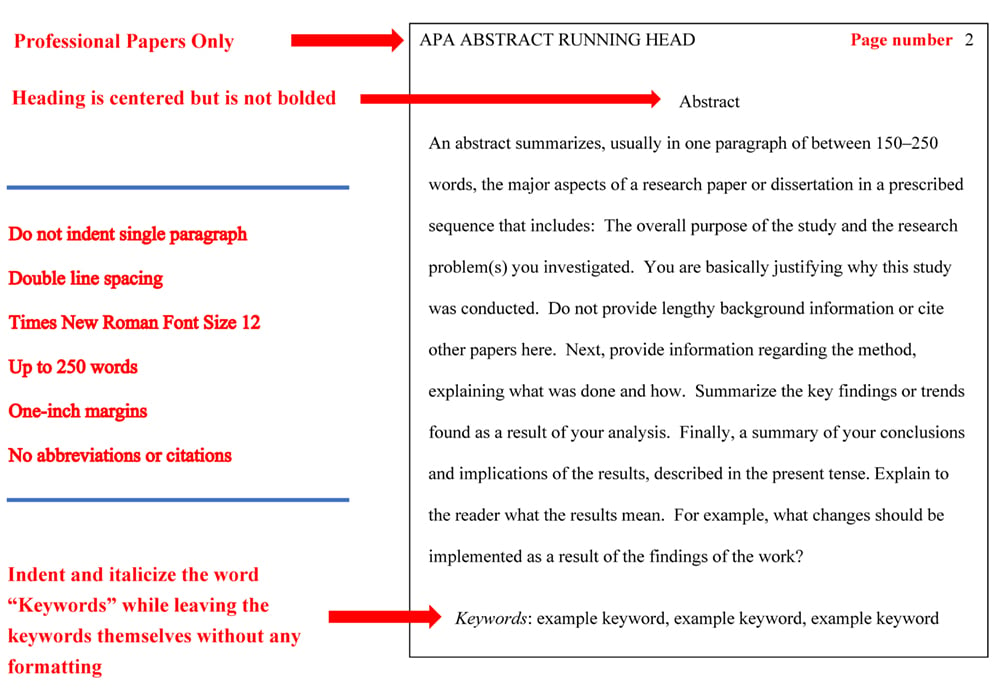
Further Information
- APA 7th Edition Abstract and Keywords Guide
- Example APA Abstract
- How to Write a Good Abstract for a Scientific Paper or Conference Presentation
- How to Write a Lab Report
- Writing an APA paper
How long should an APA abstract be?
An APA abstract should typically be between 150 to 250 words long. However, the exact length may vary depending on specific publication or assignment guidelines. It is crucial that it succinctly summarizes the essential elements of the work, including purpose, methods, findings, and conclusions.
Where does the abstract go in an APA paper?
In an APA formatted paper, the abstract is placed on its own page, directly after the title page and before the main body of the paper. It’s typically the second page of the document. It starts with the word “Abstract” (centered and not in bold) at the top of the page, followed by the text of the abstract itself.
What are the 4 C’s of abstract writing?
The 4 C’s of abstract writing are an approach to help you create a well-structured and informative abstract. They are:
Conciseness: An abstract should briefly summarize the key points of your study. Stick to the word limit (typically between 150-250 words for an APA abstract) and avoid unnecessary details.
Clarity: Your abstract should be easy to understand. Avoid jargon and complex sentences. Clearly explain the purpose, methods, results, and conclusions of your study.
Completeness: Even though it’s brief, the abstract should provide a complete overview of your study, including the purpose, methods, key findings, and your interpretation of the results.
Cohesion: The abstract should flow logically from one point to the next, maintaining a coherent narrative about your study. It’s not just a list of disjointed elements; it’s a brief story of your research from start to finish.
What is the abstract of a psychology paper?
An abstract in a psychology paper serves as a snapshot of the paper, allowing readers to quickly understand the purpose, methodology, results, and implications of the research without reading the entire paper. It is generally between 150-250 words long.
- Privacy Policy

Home » Research Paper Abstract – Writing Guide and Examples
Research Paper Abstract – Writing Guide and Examples
Table of Contents

Research Paper Abstract
Research Paper Abstract is a brief summary of a research pape r that describes the study’s purpose, methods, findings, and conclusions . It is often the first section of the paper that readers encounter, and its purpose is to provide a concise and accurate overview of the paper’s content. The typical length of an abstract is usually around 150-250 words, and it should be written in a concise and clear manner.
Research Paper Abstract Structure
The structure of a research paper abstract usually includes the following elements:
- Background or Introduction: Briefly describe the problem or research question that the study addresses.
- Methods : Explain the methodology used to conduct the study, including the participants, materials, and procedures.
- Results : Summarize the main findings of the study, including statistical analyses and key outcomes.
- Conclusions : Discuss the implications of the study’s findings and their significance for the field, as well as any limitations or future directions for research.
- Keywords : List a few keywords that describe the main topics or themes of the research.
How to Write Research Paper Abstract
Here are the steps to follow when writing a research paper abstract:
- Start by reading your paper: Before you write an abstract, you should have a complete understanding of your paper. Read through the paper carefully, making sure you understand the purpose, methods, results, and conclusions.
- Identify the key components : Identify the key components of your paper, such as the research question, methods used, results obtained, and conclusion reached.
- Write a draft: Write a draft of your abstract, using concise and clear language. Make sure to include all the important information, but keep it short and to the point. A good rule of thumb is to keep your abstract between 150-250 words.
- Use clear and concise language : Use clear and concise language to explain the purpose of your study, the methods used, the results obtained, and the conclusions drawn.
- Emphasize your findings: Emphasize your findings in the abstract, highlighting the key results and the significance of your study.
- Revise and edit: Once you have a draft, revise and edit it to ensure that it is clear, concise, and free from errors.
- Check the formatting: Finally, check the formatting of your abstract to make sure it meets the requirements of the journal or conference where you plan to submit it.
Research Paper Abstract Examples
Research Paper Abstract Examples could be following:
Title : “The Effectiveness of Cognitive-Behavioral Therapy for Treating Anxiety Disorders: A Meta-Analysis”
Abstract : This meta-analysis examines the effectiveness of cognitive-behavioral therapy (CBT) in treating anxiety disorders. Through the analysis of 20 randomized controlled trials, we found that CBT is a highly effective treatment for anxiety disorders, with large effect sizes across a range of anxiety disorders, including generalized anxiety disorder, panic disorder, and social anxiety disorder. Our findings support the use of CBT as a first-line treatment for anxiety disorders and highlight the importance of further research to identify the mechanisms underlying its effectiveness.
Title : “Exploring the Role of Parental Involvement in Children’s Education: A Qualitative Study”
Abstract : This qualitative study explores the role of parental involvement in children’s education. Through in-depth interviews with 20 parents of children in elementary school, we found that parental involvement takes many forms, including volunteering in the classroom, helping with homework, and communicating with teachers. We also found that parental involvement is influenced by a range of factors, including parent and child characteristics, school culture, and socio-economic status. Our findings suggest that schools and educators should prioritize building strong partnerships with parents to support children’s academic success.
Title : “The Impact of Exercise on Cognitive Function in Older Adults: A Systematic Review and Meta-Analysis”
Abstract : This paper presents a systematic review and meta-analysis of the existing literature on the impact of exercise on cognitive function in older adults. Through the analysis of 25 randomized controlled trials, we found that exercise is associated with significant improvements in cognitive function, particularly in the domains of executive function and attention. Our findings highlight the potential of exercise as a non-pharmacological intervention to support cognitive health in older adults.
When to Write Research Paper Abstract
The abstract of a research paper should typically be written after you have completed the main body of the paper. This is because the abstract is intended to provide a brief summary of the key points and findings of the research, and you can’t do that until you have completed the research and written about it in detail.
Once you have completed your research paper, you can begin writing your abstract. It is important to remember that the abstract should be a concise summary of your research paper, and should be written in a way that is easy to understand for readers who may not have expertise in your specific area of research.
Purpose of Research Paper Abstract
The purpose of a research paper abstract is to provide a concise summary of the key points and findings of a research paper. It is typically a brief paragraph or two that appears at the beginning of the paper, before the introduction, and is intended to give readers a quick overview of the paper’s content.
The abstract should include a brief statement of the research problem, the methods used to investigate the problem, the key results and findings, and the main conclusions and implications of the research. It should be written in a clear and concise manner, avoiding jargon and technical language, and should be understandable to a broad audience.
The abstract serves as a way to quickly and easily communicate the main points of a research paper to potential readers, such as academics, researchers, and students, who may be looking for information on a particular topic. It can also help researchers determine whether a paper is relevant to their own research interests and whether they should read the full paper.
About the author
Muhammad Hassan
Researcher, Academic Writer, Web developer
You may also like

Research Design – Types, Methods and Examples

APA Research Paper Format – Example, Sample and...

Research Objectives – Types, Examples and...

Research Paper Outline – Types, Example, Template

Scope of the Research – Writing Guide and...

Ethical Considerations – Types, Examples and...

How to Write an Abstract in Research Papers (with Examples)

An abstract in research papers is a keyword-rich summary usually not exceeding 200-350 words. It can be considered the “face” of research papers because it creates an initial impression on the readers. While searching databases (such as PubMed) for research papers, a title is usually the first selection criterion for readers. If the title matches their search criteria, then the readers read the abstract, which sets the tone of the paper. Titles and abstracts are often the only freely available parts of research papers on journal websites. The pdf versions of full articles need to be purchased. Journal reviewers are often provided with only the title and abstract before they agree to review the complete paper. [ 1]
Abstracts in research papers provide readers with a quick insight into what the paper is about to help them decide whether they want to read it further or not. Abstracts are the main selling points of articles and therefore should be carefully drafted, accurately highlighting the important aspects. [ 2]
This article will help you identify the important components and provide tips on how to write an abstract in research papers effectively
What is an Abstract?
An abstract in research papers can be defined as a synopsis of the paper. It should be clear, direct, self-contained, specific, unbiased, and concise. These summaries are published along with the complete research paper and are also submitted to conferences for consideration for presentation.
Abstracts are of four types and journals can follow any of these formats: [ 2]
- Structured
- Unstructured
- Descriptive
- Informative
Structured abstracts are used by most journals because they are more organized and have clear sections, usually including introduction/background; objective; design, settings, and participants (or materials and methods); outcomes and measures; results; and conclusion. These headings may differ based on the journal or the type of paper. Clinical trial abstracts should include the essential items mentioned in the CONSORT (Consolidated Standards Of Reporting Trials) guidelines.

Figure 1. Structured abstract example [3]
Unstructured abstracts are common in social science, humanities, and physical science journals. They usually have one paragraph and no specific structure or subheadings. These abstracts are commonly used for research papers that don’t report original work and therefore have a more flexible and narrative style.

Figure 2. Unstructured abstract example [3]
Descriptive abstracts are short (75–150 words) and provide an outline with only the most important points of research papers. They are used for shorter articles such as case reports, reviews, and opinions where space is at a premium, and rarely for original investigations. These abstracts don’t present the results but mainly list the topics covered.
Here’s a sample abstract . [ 4]
“Design of a Radio-Based System for Distribution Automation”
A new survey by the Maryland Public Utilities Commission suggests that utilities have not effectively explained to consumers the benefits of smart meters. The two-year study of 86,000 consumers concludes that the long-term benefits of smart meters will not be realized until consumers understand the benefits of shifting some of their power usage to off-peak hours in response to the data they receive from their meters. The study presents recommendations for utilities and municipal governments to improve customer understanding of how to use the smart meters effectively.
Keywords: smart meters, distribution systems, load, customer attitudes, power consumption, utilities
Informative abstracts (structured or unstructured) give a complete detailed summary, including the main results, of the research paper and may or may not have subsections.

Figure 3. Informative abstract example [5]
Purpose of Abstracts in Research
Abstracts in research have two main purposes—selection and indexing. [ 6,7]
- Selection : Abstracts allow interested readers to quickly decide the relevance of a paper to gauge if they should read it completely.
- Indexing : Most academic journal databases accessed through libraries enable you to search abstracts, allowing for quick retrieval of relevant articles and avoiding unnecessary search results. Therefore, abstracts must necessarily include the keywords that researchers may use to search for articles.
Thus, a well-written, keyword-rich abstract can p ique readers’ interest and curiosity and help them decide whether they want to read the complete paper. It can also direct readers to articles of potential clinical and research interest during an online search.

Contents of Abstracts in Research
Abstracts in research papers summarize the main points of an article and are broadly categorized into four or five sections. Here are some details on how to write an abstract .
Introduction/Background and/or Objectives
This section should provide the following information:
- What is already known about the subject?
- What is not known about the subject or what does the study aim to investigate?
The hypothesis or research question and objectives should be mentioned here. The Background sets the context for the rest of the paper and its length should be short so that the word count could be saved for the Results or other information directly pertaining to the study. The objective should be written in present or past simple tense.
Examples:
The antidepressant efficacy of desvenlafaxine (DV) has been established in 8-week, randomized controlled trials. The present study examined the continued efficacy of DV across 6 months of maintenance treatment . [ 1]
Objective: To describe gastric and breast cancer risk estimates for individuals with CDH1 variants.
Design, Setting, and Participants (or Materials and Methods)
This section should provide information on the processes used and should be written in past simple tense because the process is already completed.
A few important questions to be answered include:
- What was the research design and setting?
- What was the sample size and how were the participants sampled?
- What treatments did the participants receive?
- What were the data collection and data analysis dates?
- What was the primary outcome measure?
Hazard ratios (HRs) were estimated for each cancer type and used to calculate cumulative risks and risks per decade of life up to age 80 years.

This section, written in either present or past simple tense, should be the longest and should describe the main findings of the study. Here’s an example of how descriptive the sentences should be:
Avoid: Response rates differed significantly between diabetic and nondiabetic patients.
Better: The response rate was higher in nondiabetic than in diabetic patients (49% vs 30%, respectively; P<0.01).
This section should include the following information:
- Total number of patients (included, excluded [exclusion criteria])
- Primary and secondary outcomes, expressed in words, and supported by numerical data
- Data on adverse outcomes
Example: [ 8]
In total, 10.9% of students were reported to have favorable study skills. The minimum score was found for preparation for examination domain. Also, a significantly positive correlation was observed between students’ study skills and their Grade Point Average (GPA) of previous term (P=0.001, r=0.269) and satisfaction with study skills (P=0.001, r=0.493).
Conclusions
Here, authors should mention the importance of their findings and also the practical and theoretical implications, which would benefit readers referring to this paper for their own research. Present simple tense should be used here.
Examples: [ 1,8]
The 9.3% prevalence of bipolar spectrum disorders in students at an arts university is substantially higher than general population estimates. These findings strengthen the oft-expressed hypothesis linking creativity with affective psychopathology.
The findings indicated that students’ study skills need to be improved. Given the significant relationship between study skills and GPA, as an index of academic achievement, and satisfaction, it is necessary to promote the students’ study skills. These skills are suggested to be reinforced, with more emphasis on weaker domains.

When to Write an Abstract
In addition to knowing how to write an abstract , you should also know when to write an abstract . It’s best to write abstracts once the paper is completed because this would make it easier for authors to extract relevant parts from every section.
Abstracts are usually required for: [ 7]
- submitting articles to journals
- applying for research grants
- writing book proposals
- completing and submitting dissertations
- submitting proposals for conference papers
Mostly, the author of the entire work writes the abstract (the first author, in works with multiple authors). However, there are professional abstracting services that hire writers to draft abstracts of other people’s work.
How to Write an Abstract (Step-by-Step Process)
Here are some key steps on how to write an abstract in research papers: [ 9]
- Write the abstract after you’ve finished writing your paper.
- Select the major objectives/hypotheses and conclusions from your Introduction and Conclusion sections.
- Select key sentences from your Methods section.
- Identify the major results from the Results section.
- Paraphrase or re-write the sentences selected in steps 2, 3, and 4 in your own words into one or two paragraphs in the following sequence: Introduction/Objective, Methods, Results, and Conclusions. The headings may differ among journals, but the content remains the same.
- Ensure that this draft does not contain: a. new information that is not present in the paper b. undefined abbreviations c. a discussion of previous literature or reference citations d. unnecessary details about the methods used
- Remove all extra information and connect your sentences to ensure that the information flows well, preferably in the following order: purpose; basic study design, methodology and techniques used; major findings; summary of your interpretations, conclusions, and implications. Use section headings for structured abstracts.
- Ensure consistency between the information presented in the abstract and the paper.
- Check to see if the final abstract meets the guidelines of the target journal (word limit, type of abstract, recommended subheadings, etc.) and if all the required information has been included.
Choosing Keywords for Abstracts
Keywords [ 2] are the important and repeatedly used words and phrases in research papers and can help indexers and search engines find papers relevant to your requirements. Easy retrieval would help in reaching a wider audience and eventually gain more citations. In the fields of medicine and health, keywords should preferably be chosen from the Medical Subject Headings (MeSH) list of the US National Library of Medicine because they are used for indexing. These keywords need to be different from the words in the main title (automatically used for indexing) but can be variants of the terms/phrases used in the title, abstract, and the main text. Keywords should represent the content of your manuscript and be specific to your subject area.
Basic tips for authors [ 10,11]
- Read through your paper and highlight key terms or phrases that are most relevant and frequently used in your field, to ensure familiarity.
- Several journals provide instructions about the length (eg, 3 words in a keyword) and maximum number of keywords allowed and other related rules. Create a list of keywords based on these instructions and include specific phrases containing 2 to 4 words. A longer string of words would yield generic results irrelevant to your field.
- Use abbreviations, acronyms, and initializations if these would be more familiar.
- Search with your keywords to ensure the results fit with your article and assess how helpful they would be to readers.
- Narrow down your keywords to about five to ten, to ensure accuracy.
- Finalize your list based on the maximum number allowed.
Few examples: [ 12]
Important Tips for Writing an Abstract
Here are a few tips on how to write an abstract to ensure that your abstract is complete, concise, and accurate. [ 1,2]
- Write the abstract last.
- Follow journal-specific formatting guidelines or Instructions to Authors strictly to ensure acceptance for publication.
- Proofread the final draft meticulously to avoid grammatical or typographical errors.
- Ensure that the terms or data mentioned in the abstract are consistent with the main text.
- Include appropriate keywords at the end.
Do not include:
- New information
- Text citations to references
- Citations to tables and figures
- Generic statements
- Abbreviations unless necessary, like a trial or study name

Key Takeaways
Here’s a quick snapshot of all the important aspects of how to write an abstract . [2]
- An abstract in research is a summary of the paper and describes only the main aspects. Typically, abstracts are about 200-350 words long.
- Abstracts are of four types—structured, unstructured, descriptive, and informative.
- Abstracts should be simple, clear, concise, independent, and unbiased (present both favorable and adverse outcomes).
- They should adhere to the prescribed journal format, including word limits, section headings, number of keywords, fonts used, etc.
- The terminology should be consistent with the main text.
- Although the section heading names may differ for journals, every abstract should include a background and objective, analysis methods, primary results, and conclusions.
- Nonstandard abbreviations, references, and URLs shouldn’t be included.
- Only relevant and specific keywords should be used to ensure focused searches and higher citation frequency.
- Abstracts should be written last after completing the main paper.
Frequently Asked Questions
Q1. Do all journals have different guidelines for abstracts?
A1. Yes, all journals have their own specific guidelines for writing abstracts; a few examples are given in the following table. [ 6,13,14,15]
Q2. What are the common mistakes to avoid when writing an abstract?
A2. Listed below are a few mistakes that authors may make inadvertently while writing abstracts.
- Copying sentences from the paper verbatim
An abstract is a summary, which should be created by paraphrasing your own work or writing in your own words. Extracting sentences from every section and combining them into one paragraph cannot be considered summarizing.
- Not adhering to the formatting guidelines
Journals have special instructions for writing abstracts, such as word limits and section headings. These should be followed strictly to avoid rejections.
- Not including the right amount of details in every section
Both too little and too much information could discourage readers. For instance, if the Background has very little information, the readers may not get sufficient context to appreciate your research. Similarly, incomplete information in the Methods and a text-heavy Results section without supporting numerical data may affect the credibility of your research.
- Including citations, standard abbreviations, and detailed measurements
Typically, abstracts shouldn’t include these elements—citations, URLs, and abbreviations. Only nonstandard abbreviations are allowed or those that would be more familiar to readers than the expansions.
- Including new information
Abstracts should strictly include only the same information mentioned in the main text. Any new information should first be added to the text and then to the abstract only if necessary or if permitted by the word limit.
- Not including keywords
Keywords are essential for indexing and searching and should be included to increase the frequency of retrieval and citation.
Q3. What is the difference between abstracts in research papers and conference abstracts? [16]
A3. The table summarizes the main differences between research and conference abstracts.
Thus, abstracts are essential “trailers” that can market your research to a wide audience. The better and more complete the abstract the more are the chances of your paper being read and cited. By following our checklist and ensuring that all key elements are included, you can create a well-structured abstract that summarizes your paper accurately.
References
- Andrade C. How to write a good abstract for a scientific paper or conference presentation. Indian J Psychiatry . 2011; 53(2):172-175. Accessed June 14, 2024. https://www.ncbi.nlm.nih.gov/pmc/articles/PMC3136027/
- Tullu MS. Writing the title and abstract for a research paper: Being concise, precise, and meticulous is the key. 2019; 13(Suppl 1): S12-S17. Accessed June 14, 2024. https://www.ncbi.nlm.nih.gov/pmc/articles/PMC6398294/
- Zawia J. Writing an Academic Paper? Get to know Abstracts vs. Structured Abstracts. Medium. Published October 16, 2023. Accessed June 16, 2024. https://medium.com/@jamala.zawia/writing-an-academic-paper-get-to-know-abstracts-vs-structured-abstracts-11ed86888367
- Markel M and Selber S. Technical Communication, 12 th edition. 2018; pp. 482. Bedford/St Martin’s.
- Abstracts. Arkansas State University. Accessed June 17, 2024. https://www.astate.edu/a/global-initiatives/online/a-state-online-services/online-writing-center/resources/How%20to%20Write%20an%20Abstract1.pdf
- AMA Manual of Style. 11 th edition. Oxford University Press.
- Writing an Abstract. The University of Melbourne. Accessed June 16, 2024. https://services.unimelb.edu.au/__data/assets/pdf_file/0007/471274/Writing_an_Abstract_Update_051112.pdf
- 10 Good Abstract Examples that will Kickstart Your Brain. Kibin Essay Writing Blog. Published April 5, 2017. Accessed June 17, 2024. https://www.kibin.com/essay-writing-blog/10-good-abstract-examples/
- A 10-step guide to make your research paper abstract more effective. Editage Insights. Published October 16, 2013. Accessed June 17, 2024. https://www.editage.com/insights/a-10-step-guide-to-make-your-research-paper-abstract-more-effective
- Using keywords to write your title and abstract. Taylor & Francis Author Services. Accessed June 15, 2024. https://authorservices.taylorandfrancis.com/publishing-your-research/writing-your-paper/using-keywords-to-write-title-and-abstract/
- How to choose and use keywords in research papers. Paperpal by Editage blog. Published March 10, 2023. Accessed June 17, 2024. https://paperpal.com/blog/researcher-resources/phd-pointers/how-to-choose-and-use-keywords-in-research-papers
- Title, abstract and keywords. Springer. Accessed June 16, 2024. https://www.springer.com/it/authors-editors/authorandreviewertutorials/writing-a-journal-manuscript/title-abstract-and-keywords/10285522
- Abstract and keywords guide. APA Style, 7 th edition. Accessed June 18, 2024. https://apastyle.apa.org/instructional-aids/abstract-keywords-guide.pdf
- Abstract guidelines. American Society for Microbiology. Accessed June 18, 2024. https://asm.org/events/asm-microbe/present/abstract-guidelines
- Guidelines for conference abstracts. The Lancet. Accessed June 16, 2024. https://www.thelancet.com/pb/assets/raw/Lancet/pdfs/Abstract_Guidelines_2013.pdf
- Is a conference abstract the same as a paper abstract? Global Conference Alliance, Inc. Accessed June 18, 2024. https://globalconference.ca/is-a-conference-abstract-the-same-as-a-paper-abstract/
Paperpal is a comprehensive AI writing toolkit that helps students and researchers achieve 2x the writing in half the time. It leverages 21+ years of STM experience and insights from millions of research articles to provide in-depth academic writing, language editing, and submission readiness support to help you write better, faster.
Get accurate academic translations, rewriting support, grammar checks, vocabulary suggestions, and generative AI assistance that delivers human precision at machine speed. Try for free or upgrade to Paperpal Prime starting at US$19 a month to access premium features, including consistency, plagiarism, and 30+ submission readiness checks to help you succeed.
Experience the future of academic writing – Sign up to Paperpal and start writing for free!
Related Reads:
- What are Journal Guidelines on Using Generative AI Tools
- How to Write a High-Quality Conference Paper
How to Write Dissertation Acknowledgements?
- How to Write the First Draft of a Research Paper with Paperpal?
Top 7 AI Tools for Research 2024
You may also like, what are the types of literature reviews , abstract vs introduction: what is the difference , mla format: guidelines, template and examples , machine translation vs human translation: which is reliable..., dissertation printing and binding | types & comparison , what is a dissertation preface definition and examples , how to write a research proposal: (with examples..., how to write your research paper in apa..., how to choose a dissertation topic, how to write a phd research proposal.
An official website of the United States government
Official websites use .gov A .gov website belongs to an official government organization in the United States.
Secure .gov websites use HTTPS A lock ( Lock Locked padlock icon ) or https:// means you've safely connected to the .gov website. Share sensitive information only on official, secure websites.
- Publications
- Account settings
- Advanced Search
- Journal List
How to write a good abstract for a scientific paper or conference presentation
Chittaranjan andrade.
- Author information
- Copyright and License information
Address for correspondence: Dr. Chittaranjan Andrade, Department of Psychopharmacology, National Institute of Mental Health and Neurosciences, Bangalore – 560 029, Karnataka, India. E-mail: [email protected]
This is an open-access article distributed under the terms of the Creative Commons Attribution-Noncommercial-Share Alike 3.0 Unported, which permits unrestricted use, distribution, and reproduction in any medium, provided the original work is properly cited.
Abstracts of scientific papers are sometimes poorly written, often lack important information, and occasionally convey a biased picture. This paper provides detailed suggestions, with examples, for writing the background, methods, results, and conclusions sections of a good abstract. The primary target of this paper is the young researcher; however, authors with all levels of experience may find useful ideas in the paper.
Keywords: Abstract, preparing a manuscript, writing skills
INTRODUCTION
This paper is the third in a series on manuscript writing skills, published in the Indian Journal of Psychiatry . Earlier articles offered suggestions on how to write a good case report,[ 1 ] and how to read, write, or review a paper on randomized controlled trials.[ 2 , 3 ] The present paper examines how authors may write a good abstract when preparing their manuscript for a scientific journal or conference presentation. Although the primary target of this paper is the young researcher, it is likely that authors with all levels of experience will find at least a few ideas that may be useful in their future efforts.
The abstract of a paper is the only part of the paper that is published in conference proceedings. The abstract is the only part of the paper that a potential referee sees when he is invited by an editor to review a manuscript. The abstract is the only part of the paper that readers see when they search through electronic databases such as PubMed. Finally, most readers will acknowledge, with a chuckle, that when they leaf through the hard copy of a journal, they look at only the titles of the contained papers. If a title interests them, they glance through the abstract of that paper. Only a dedicated reader will peruse the contents of the paper, and then, most often only the introduction and discussion sections. Only a reader with a very specific interest in the subject of the paper, and a need to understand it thoroughly, will read the entire paper.
Thus, for the vast majority of readers, the paper does not exist beyond its abstract. For the referees, and the few readers who wish to read beyond the abstract, the abstract sets the tone for the rest of the paper. It is therefore the duty of the author to ensure that the abstract is properly representative of the entire paper. For this, the abstract must have some general qualities. These are listed in Table 1 .
General qualities of a good abstract

SECTIONS OF AN ABSTRACT
Although some journals still publish abstracts that are written as free-flowing paragraphs, most journals require abstracts to conform to a formal structure within a word count of, usually, 200–250 words. The usual sections defined in a structured abstract are the Background, Methods, Results, and Conclusions; other headings with similar meanings may be used (eg, Introduction in place of Background or Findings in place of Results). Some journals include additional sections, such as Objectives (between Background and Methods) and Limitations (at the end of the abstract). In the rest of this paper, issues related to the contents of each section will be examined in turn.
This section should be the shortest part of the abstract and should very briefly outline the following information:
What is already known about the subject, related to the paper in question
What is not known about the subject and hence what the study intended to examine (or what the paper seeks to present)
In most cases, the background can be framed in just 2–3 sentences, with each sentence describing a different aspect of the information referred to above; sometimes, even a single sentence may suffice. The purpose of the background, as the word itself indicates, is to provide the reader with a background to the study, and hence to smoothly lead into a description of the methods employed in the investigation.
Some authors publish papers the abstracts of which contain a lengthy background section. There are some situations, perhaps, where this may be justified. In most cases, however, a longer background section means that less space remains for the presentation of the results. This is unfortunate because the reader is interested in the paper because of its findings, and not because of its background.
A wide variety of acceptably composed backgrounds is provided in Table 2 ; most of these have been adapted from actual papers.[ 4 – 9 ] Readers may wish to compare the content in Table 2 with the original abstracts to see how the adaptations possibly improve on the originals. Note that, in the interest of brevity, unnecessary content is avoided. For instance, in Example 1 there is no need to state “The antidepressant efficacy of desvenlafaxine (DV), a dual-acting antidepressant drug , has been established…” (the unnecessary content is italicized).
Examples of the background section of an abstract
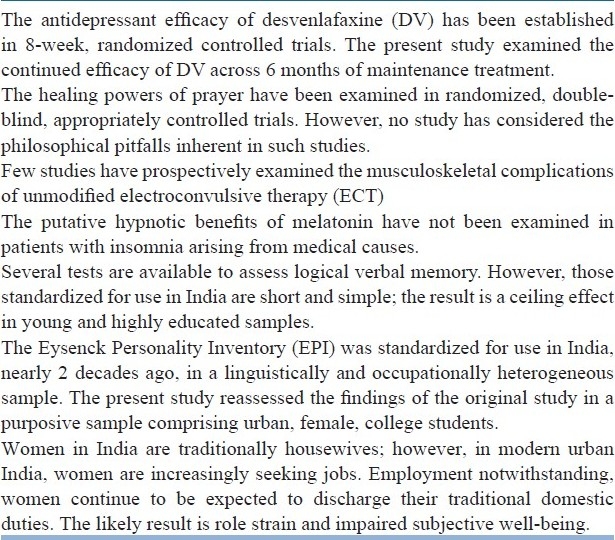
The methods section is usually the second-longest section in the abstract. It should contain enough information to enable the reader to understand what was done, and how. Table 3 lists important questions to which the methods section should provide brief answers.
Questions regarding which information should ideally be available in the methods section of an abstract

Carelessly written methods sections lack information about important issues such as sample size, numbers of patients in different groups, doses of medications, and duration of the study. Readers have only to flip through the pages of a randomly selected journal to realize how common such carelessness is.
Table 4 presents examples of the contents of accept-ably written methods sections, modified from actual publications.[ 10 , 11 ] Readers are invited to take special note of the first sentence of each example in Table 4 ; each is packed with detail, illustrating how to convey the maximum quantity of information with maximum economy of word count.
Examples of the methods section of an abstract
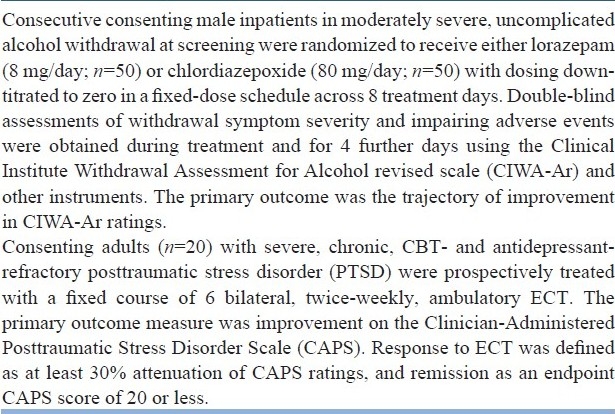
The results section is the most important part of the abstract and nothing should compromise its range and quality. This is because readers who peruse an abstract do so to learn about the findings of the study. The results section should therefore be the longest part of the abstract and should contain as much detail about the findings as the journal word count permits. For example, it is bad writing to state “Response rates differed significantly between diabetic and nondiabetic patients.” A better sentence is “The response rate was higher in nondiabetic than in diabetic patients (49% vs 30%, respectively; P <0.01).”
Important information that the results should present is indicated in Table 5 . Examples of acceptably written abstracts are presented in Table 6 ; one of these has been modified from an actual publication.[ 11 ] Note that the first example is rather narrative in style, whereas the second example is packed with data.
Information that the results section of the abstract should ideally present

Examples of the results section of an abstract
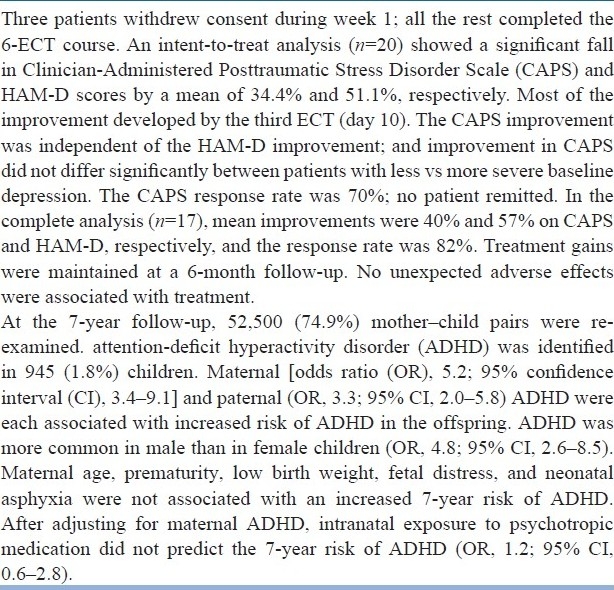
CONCLUSIONS
This section should contain the most important take-home message of the study, expressed in a few precisely worded sentences. Usually, the finding highlighted here relates to the primary outcome measure; however, other important or unexpected findings should also be mentioned. It is also customary, but not essential, for the authors to express an opinion about the theoretical or practical implications of the findings, or the importance of their findings for the field. Thus, the conclusions may contain three elements:
The primary take-home message
The additional findings of importance
The perspective
Despite its necessary brevity, this section has the most impact on the average reader because readers generally trust authors and take their assertions at face value. For this reason, the conclusions should also be scrupulously honest; and authors should not claim more than their data demonstrate. Hypothetical examples of the conclusions section of an abstract are presented in Table 7 .
Examples of the conclusions section of an abstract
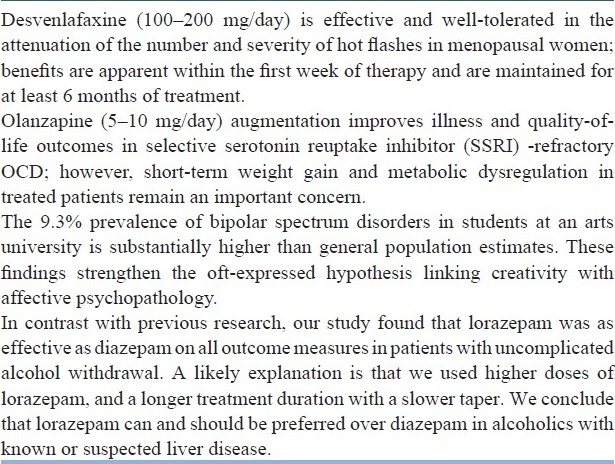
MISCELLANEOUS OBSERVATIONS
Citation of references anywhere within an abstract is almost invariably inappropriate. Other examples of unnecessary content in an abstract are listed in Table 8 .
Examples of unnecessary content in a abstract
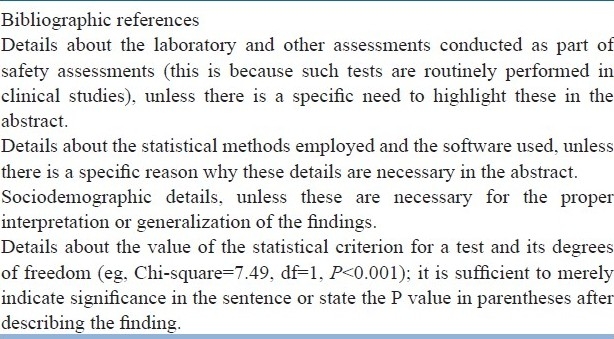
It goes without saying that whatever is present in the abstract must also be present in the text. Likewise, whatever errors should not be made in the text should not appear in the abstract (eg, mistaking association for causality).
As already mentioned, the abstract is the only part of the paper that the vast majority of readers see. Therefore, it is critically important for authors to ensure that their enthusiasm or bias does not deceive the reader; unjustified speculations could be even more harmful. Misleading readers could harm the cause of science and have an adverse impact on patient care.[ 12 ] A recent study,[ 13 ] for example, concluded that venlafaxine use during the second trimester of pregnancy may increase the risk of neonates born small for gestational age. However, nowhere in the abstract did the authors mention that these conclusions were based on just 5 cases and 12 controls out of the total sample of 126 cases and 806 controls. There were several other serious limitations that rendered the authors’ conclusions tentative, at best; yet, nowhere in the abstract were these other limitations expressed.
As a parting note: Most journals provide clear instructions to authors on the formatting and contents of different parts of the manuscript. These instructions often include details on what the sections of an abstract should contain. Authors should tailor their abstracts to the specific requirements of the journal to which they plan to submit their manuscript. It could also be an excellent idea to model the abstract of the paper, sentence for sentence, on the abstract of an important paper on a similar subject and with similar methodology, published in the same journal for which the manuscript is slated.
Source of Support: Nil
Conflict of Interest: None declared.
- 1. Andrade C, Mendhekar DN. Lithium, trifluperazine, and idiopathic leucopenia: Author and reviewer perspectives on how to write a good case report. Indian J Psychiatry. 2010;52:187–90. doi: 10.4103/0019-5545.64594. [ DOI ] [ PMC free article ] [ PubMed ] [ Google Scholar ]
- 2. Andrade C. A 6-week, multicentre, randomized controlled clinical trial to evaluate the safety and efficacy of placeboxetine hydrochloride in the treatment of major depressive disorder in an Indian setting. Indian J Psychiatry. 2011;53:69–72. doi: 10.4103/0019-5545.75555. [ DOI ] [ PMC free article ] [ PubMed ] [ Google Scholar ]
- 3. Andrade C. Placeboxetine for major depressive disorder: Researcher, author, reader, and reviewer perspectives on randomized controlled trials. Indian J Psychiatry. 2011;53:73–7. doi: 10.4103/0019-5545.75553. [ DOI ] [ PMC free article ] [ PubMed ] [ Google Scholar ]
- 4. Andrade C, Radhakrishnan R. Prayer and healing: A medical and scientific perspective on randomized controlled trials. Indian J Psychiatry. 2009;51:247–53. doi: 10.4103/0019-5545.58288. [ DOI ] [ PMC free article ] [ PubMed ] [ Google Scholar ]
- 5. Shah N, Mahadeshwar S, Bhakta S, Bhirud M, Fernandes P, Andrade C. The safety and efficacy of benzodiazepine-modified treatments as a special form of unmodified ECT. J ECT. 2010;26:23–9. doi: 10.1097/YCT.0b013e3181d2711f. [ DOI ] [ PubMed ] [ Google Scholar ]
- 6. Andrade C, Srihari BS, Reddy KP, Chandramma L. Melatonin in medically ill patients with insomnia: a double-blind, placebo-controlled study. J Clin Psychiatry. 2001;62:41–5. doi: 10.4088/jcp.v62n0109. [ DOI ] [ PubMed ] [ Google Scholar ]
- 7. Andrade C, Madhavan AP, Kishore ML. Testing logical memory using a complex passage: Development and standardization of a new test. Indian J Psychiatry. 2001;43:252–6. [ PMC free article ] [ PubMed ] [ Google Scholar ]
- 8. Andrade AC, Pai S, Cardoza S, Andrade C. Personality profile of urban, female college students. Indian J Psychol Med. 1994;17:41–6. [ Google Scholar ]
- 9. Andrade C, Postma K, Abraham K. Influence of women's work status on the well-being of Indian couples. Int J Soc Psychiatry. 1999;45:65–75. doi: 10.1177/002076409904500108. [ DOI ] [ PubMed ] [ Google Scholar ]
- 10. Kumar CN, Andrade C, Murthy P. A randomized, double-blind comparison of lorazepam and chlordiazepoxide in patients with uncomplicated alcohol withdrawal. J Stud Alcohol Drugs. 2009;70:457–74. doi: 10.15288/jsad.2009.70.467. [ DOI ] [ PubMed ] [ Google Scholar ]
- 11. Margoob MA, Ali Z, Andrade C. Efficacy of ECT in chronic, severe, antidepressant- and CBT-refractory PTSD: An open, prospective study. Brain Stimul. 2010;3:28–35. doi: 10.1016/j.brs.2009.04.005. [ DOI ] [ PubMed ] [ Google Scholar ]
- 12. Rao TS, Andrade C. The MMR vaccine and autism: Sensation, refutation, retraction, and fraud. Editorial. Indian J Psychiatry. 2011;53:95–6. doi: 10.4103/0019-5545.82529. [ DOI ] [ PMC free article ] [ PubMed ] [ Google Scholar ]
- 13. Ramos I, St-Andri M, Birard A. Association between antidepressant use during pregnancy and infants born small for gestational age. Can J Psychiatry. 2010;55:643–52. [ PubMed ] [ Google Scholar ]
- View on publisher site
- Collections
Similar articles
Cited by other articles, links to ncbi databases.
- Download .nbib .nbib
- Format: AMA APA MLA NLM
Add to Collections

Magnum Proofreading Services
Writing an Abstract for a Research Paper: Guidelines, Examples, and Templates
There are six steps to writing a standard abstract. (1) Begin with a broad statement about your topic. Then, (2) state the problem or knowledge gap related to this topic that your study explores. After that, (3) describe what specific aspect of this problem you investigated, and (4) briefly explain how you went about doing this. After that, (5) describe the most meaningful outcome(s) of your study. Finally, (6) close your abstract by explaining the broad implication(s) of your findings.
In this article, I present step-by-step guidelines for writing an abstract for an academic paper. These guidelines are fo llowed by an example of a full abstract that follows these guidelines and a few fill-in-the-blank templates that you can use to write your own abstract.
Guidelines for Writing an Abstract
The basic structure of an abstract is illustrated below.
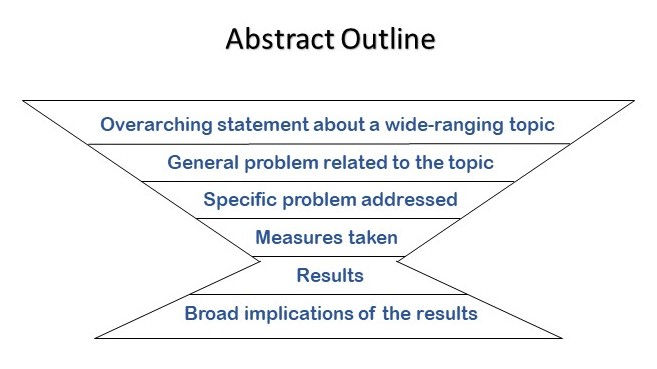
A standard abstract starts with a very general statement and becomes more specific with each sentence that follows until once again making a broad statement about the study’s implications at the end. Altogether, a standard abstract has six functions, which are described in detail below.

Start by making a broad statement about your topic.
The first sentence of your abstract should briefly describe a problem that is of interest to your readers. When writing this first sentence, you should think about who comprises your target audience and use terms that will appeal to this audience. If your opening sentence is too broad, it might lose the attention of potential readers because they will not know if your study is relevant to them.
Too broad : Maintaining an ideal workplace environment has a positive effect on employees.
The sentence above is so broad that it will not grab the reader’s attention. While it gives the reader some idea of the area of study, it doesn’t provide any details about the author’s topic within their research area. This can be fixed by inserting some keywords related to the topic (these are underlined in the revised example below).
Improved : Keeping the workplace environment at an ideal temperature positively affects the overall health of employees.
The revised sentence is much better, as it expresses two points about the research topic—namely, (i) what aspect of workplace environment was studied, (ii) what aspect of employees was observed. The mention of these aspects of the research will draw the attention of readers who are interested in them.
Describe the general problem that your paper addresses.
After describing your topic in the first sentence, you can then explain what aspect of this topic has motivated your research. Often, authors use this part of the abstract to describe the research gap that they identified and aimed to fill. These types of sentences are often characterized by the use of words such as “however,” “although,” “despite,” and so on.
However, a comprehensive understanding of how different workplace bullying experiences are associated with absenteeism is currently lacking.
The above example is typical of a sentence describing the problem that a study intends to tackle. The author has noticed that there is a gap in the research, and they briefly explain this gap here.
Although it has been established that quantity and quality of sleep can affect different types of task performance and personal health, the interactions between sleep habits and workplace behaviors have received very little attention.
The example above illustrates a case in which the author has accomplished two tasks with one sentence. The first part of the sentence (up until the comma) mentions the general topic that the research fits into, while the second part (after the comma) describes the general problem that the research addresses.
Express the specific problem investigated in your paper.
After describing the general problem that motivated your research, the next sentence should express the specific aspect of the problem that you investigated. Sentences of this type are often indicated by the use of phrases like “the purpose of this research is to,” “this paper is intended to,” or “this work aims to.”
Uninformative : However, a comprehensive understanding of how different workplace bullying experiences are associated with absenteeism is currently lacking. The present article aimed to provide new insights into the relationship between workplace bullying and absenteeism .
The second sentence in the above example is a mere rewording of the first sentence. As such, it adds nothing to the abstract. The second sentence should be more specific than the preceding one.
Improved : However, a comprehensive understanding of how different workplace bullying experiences are associated with absenteeism is currently lacking. The present article aimed to define various subtypes of workplace bullying and determine which subtypes tend to lead to absenteeism .
The second sentence of this passage is much more informative than in the previous example. This sentence lets the reader know exactly what they can expect from the full research article.
Explain how you attempted to resolve your study’s specific problem.
In this part of your abstract, you should attempt to describe your study’s methodology in one or two sentences. As such, you must be sure to include only the most important information about your method. At the same time, you must also be careful not to be too vague.
Too vague : We conducted multiple tests to examine changes in various factors related to well-being.
This description of the methodology is too vague. Instead of merely mentioning “tests” and “factors,” the author should note which specific tests were run and which factors were assessed.
Improved : Using data from BHIP completers, we conducted multiple one-way multivariate analyses of variance and follow-up univariate t-tests to examine changes in physical and mental health, stress, energy levels, social satisfaction, self-efficacy, and quality of life.
This sentence is very well-written. It packs a lot of specific information about the method into a single sentence. Also, it does not describe more details than are needed for an abstract.
Briefly tell the reader what you found by carrying out your study.
This is the most important part of the abstract—the other sentences in the abstract are there to explain why this one is relevant. When writing this sentence, imagine that someone has asked you, “What did you find in your research?” and that you need to answer them in one or two sentences.
Too vague : Consistently poor sleepers had more health risks and medical conditions than consistently optimal sleepers.
This sentence is okay, but it would be helpful to let the reader know which health risks and medical conditions were related to poor sleeping habits.
Improved : Consistently poor sleepers were more likely than consistently optimal sleepers to suffer from chronic abdominal pain, and they were at a higher risk for diabetes and heart disease.
This sentence is better, as the specific health conditions are named.
Finally, describe the major implication(s) of your study.
Most abstracts end with a short sentence that explains the main takeaway(s) that you want your audience to gain from reading your paper. Often, this sentence is addressed to people in power (e.g., employers, policymakers), and it recommends a course of action that such people should take based on the results.
Too broad : Employers may wish to make use of strategies that increase employee health.
This sentence is too broad to be useful. It does not give employers a starting point to implement a change.
Improved : Employers may wish to incorporate sleep education initiatives as part of their overall health and wellness strategies.
This sentence is better than the original, as it provides employers with a starting point—specifically, it invites employers to look up information on sleep education programs.
Abstract Example
The abstract produced here is from a paper published in Electronic Commerce Research and Applications . I have made slight alterations to the abstract so that this example fits the guidelines given in this article.
(1) Gamification can strengthen enjoyment and productivity in the workplace. (2) Despite this, research on gamification in the work context is still limited. (3) In this study, we investigated the effect of gamification on the workplace enjoyment and productivity of employees by comparing employees with leadership responsibilities to those without leadership responsibilities. (4) Work-related tasks were gamified using the habit-tracking game Habitica, and data from 114 employees were gathered using an online survey. (5) The results illustrated that employees without leadership responsibilities used work gamification as a trigger for self-motivation, whereas employees with leadership responsibilities used it to improve their health. (6) Work gamification positively affected work enjoyment for both types of employees and positively affected productivity for employees with leadership responsibilities. (7) Our results underline the importance of taking work-related variables into account when researching work gamification.
In Sentence (1), the author makes a broad statement about their topic. Notice how the nouns used (“gamification,” “enjoyment,” “productivity”) are quite general while still indicating the focus of the paper. The author uses Sentence (2) to very briefly state the problem that the research will address.
In Sentence (3), the author explains what specific aspects of the problem mentioned in Sentence (2) will be explored in the present work. Notice that the mention of leadership responsibilities makes Sentence (3) more specific than Sentence (2). Sentence (4) gets even more specific, naming the specific tools used to gather data and the number of participants.
Sentences (5) and (6) are similar, with each sentence describing one of the study’s main findings. Then, suddenly, the scope of the abstract becomes quite broad again in Sentence (7), which mentions “work-related variables” instead of a specific variable and “researching” instead of a specific kind of research.
Abstract Templates
Copy and paste any of the paragraphs below into a word processor. Then insert the appropriate information to produce an abstract for your research paper.
Template #1
Researchers have established that [Make a broad statement about your area of research.] . However, [Describe the knowledge gap that your paper addresses.] . The goal of this paper is to [Describe the purpose of your paper.] . The achieve this goal, we [Briefly explain your methodology.] . We found that [Indicate the main finding(s) of your study; you may need two sentences to do this.] . [Provide a broad implication of your results.] .
Template #2
It is well-understood that [Make a broad statement about your area of research.] . Despite this, [Describe the knowledge gap that your paper addresses.] . The current research aims to [Describe the purpose of your paper.] . To accomplish this, we [Briefly explain your methodology.] . It was discovered that [Indicate the main finding(s) of your study; you may need two sentences to do this.] . [Provide a broad implication of your results.] .
Template #3
Extensive research indicates that [Make a broad statement about your area of research.] . Nevertheless, [Describe the knowledge gap that your paper addresses.] . The present work is intended to [Describe the purpose of your paper.] . To this end, we [Briefly explain your methodology.] . The results revealed that [Indicate the main finding(s) of your study; you may need two sentences to do this.] . [Provide a broad implication of your results.] .
- How to Write an Abstract
Related Posts
How to Write a Research Paper in English: A Guide for Non-native Speakers
How to Write an Abstract Quickly
Using the Present Tense and Past Tense When Writing an Abstract
Well explained! I have given you a credit
Academic & Employability Skills
Subscribe to academic & employability skills.
Enter your email address to subscribe to this blog and receive notifications of new posts by email.
Email Address
Writing an abstract - a six point checklist (with samples)
Posted in: abstract , dissertations

The abstract is a vital part of any research paper. It is the shop front for your work, and the first stop for your reader. It should provide a clear and succinct summary of your study, and encourage your readers to read more. An effective abstract, therefore should answer the following questions:
- Why did you do this study or project?
- What did you do and how?
- What did you find?
- What do your findings mean?
So here's our run down of the key elements of a well-written abstract.
- Size - A succinct and well written abstract should be between approximately 100- 250 words.
- Background - An effective abstract usually includes some scene-setting information which might include what is already known about the subject, related to the paper in question (a few short sentences).
- Purpose - The abstract should also set out the purpose of your research, in other words, what is not known about the subject and hence what the study intended to examine (or what the paper seeks to present).
- Methods - The methods section should contain enough information to enable the reader to understand what was done, and how. It should include brief details of the research design, sample size, duration of study, and so on.
- Results - The results section is the most important part of the abstract. This is because readers who skim an abstract do so to learn about the findings of the study. The results section should therefore contain as much detail about the findings as the journal word count permits.
- Conclusion - This section should contain the most important take-home message of the study, expressed in a few precisely worded sentences. Usually, the finding highlighted here relates to the primary outcomes of the study. However, other important or unexpected findings should also be mentioned. It is also customary, but not essential, to express an opinion about the theoretical or practical implications of the findings, or the importance of their findings for the field. Thus, the conclusions may contain three elements:
- The primary take-home message.
- Any additional findings of importance.
- Implications for future studies.

Example Abstract 2: Engineering Development and validation of a three-dimensional finite element model of the pelvic bone.

Abstract from: Dalstra, M., Huiskes, R. and Van Erning, L., 1995. Development and validation of a three-dimensional finite element model of the pelvic bone. Journal of biomechanical engineering, 117(3), pp.272-278.
And finally... A word on abstract types and styles
Abstract types can differ according to subject discipline. You need to determine therefore which type of abstract you should include with your paper. Here are two of the most common types with examples.
Informative Abstract
The majority of abstracts are informative. While they still do not critique or evaluate a work, they do more than describe it. A good informative abstract acts as a surrogate for the work itself. That is, the researcher presents and explains all the main arguments and the important results and evidence in the paper. An informative abstract includes the information that can be found in a descriptive abstract [purpose, methods, scope] but it also includes the results and conclusions of the research and the recommendations of the author. The length varies according to discipline, but an informative abstract is usually no more than 300 words in length.
Descriptive Abstract A descriptive abstract indicates the type of information found in the work. It makes no judgements about the work, nor does it provide results or conclusions of the research. It does incorporate key words found in the text and may include the purpose, methods, and scope of the research. Essentially, the descriptive abstract only describes the work being summarised. Some researchers consider it an outline of the work, rather than a summary. Descriptive abstracts are usually very short, 100 words or less.
Adapted from Andrade C. How to write a good abstract for a scientific paper or conference presentation. Indian J Psychiatry. 2011 Apr;53(2):172-5. doi: 10.4103/0019-5545.82558. PMID: 21772657; PMCID: PMC3136027 .
Have you seen?
Share this:.
- Click to print (Opens in new window)
- Click to email a link to a friend (Opens in new window)
- Click to share on WhatsApp (Opens in new window)
- Click to share on LinkedIn (Opens in new window)
- Click to share on Twitter (Opens in new window)
- Click to share on Facebook (Opens in new window)
Click here to cancel reply.
- Email * (we won't publish this)
Write a response
Critical Writing
How you can be a better critical writer: going beyond description Have you ever handed in a piece of writing – an essay or report, for example – and got comments back from your tutor saying that it needs to...

Navigating the dissertation process: my tips for final years
Imagine for a moment... After months of hard work and research on a topic you're passionate about, the time has finally come to click the 'Submit' button on your dissertation. You've just completed your longest project to date as part...

8 ways to beat procrastination
Whether you’re writing an assignment or revising for exams, getting started can be hard. Fortunately, there’s lots you can do to turn procrastination into action.

How To Write A Research Paper
Research Paper Abstract

How to Write an Abstract For a Research Paper with Examples
12 min read
Published on: Jan 19, 2024
Last updated on: Jul 23, 2024
-10989.png)
People also read
How to Write a Research Paper Step by Step
How to Write a Proposal For a Research Paper in 10 Steps
A Comprehensive Guide to Creating a Research Paper Outline
Types of Research - Methodologies and Characteristics
350+ Interesting Research Paper Topics to Get You Started
Interesting Psychology Research Topics & Ideas
Qualitative Research - Types, Methods & Examples
Understanding Quantitative Research - Definition, Types, Examples, And More
Research Paper Example - Examples for Different Formats
How To Start A Research Paper - Steps With Examples
How To Write a Literature Review for a Research Paper | Steps & Examples
Types of Qualitative Research Methods - An Overview
Understanding Qualitative vs. Quantitative Research - A Complete Guide
How to Cite a Research Paper in Different Citation Styles
Easy Sociology Research Topics for Your Next Project
200+ Outstanding History Research Paper Topics With Expert Tips
How To Write a Hypothesis in a Research Paper | Steps & Examples
How to Write an Introduction for a Research Paper - A Step-by-Step Guide
How to Write a Good Research Paper Title
How to Write a Conclusion for a Research Paper in 3 Simple Steps
How To Write a Thesis For a Research Paper Step by Step
How to Write a Discussion For a Research Paper | Objectives, Steps & Examples
How to Write the Results Section of a Research Paper - Structure and Tips
How to Write a Problem Statement for a Research Paper in 6 Steps
How To Write The Methods Section of a Research Paper Step-by-Step
How to Find Sources For a Research Paper | A Guide
Share this article
Struggling to encapsulate your extensive research into a concise abstract? Writing an abstract for a research paper can be intimidating, but it doesn't have to be!
This blog is your guide to deciphering the abstract, understanding its purpose, and learning the art of writing your own.
We'll break down the abstract into clear, simple steps. We'll show you what it is, why it matters, and most importantly, how to write one that's clear, concise, and grabs your reader's attention.
So, leave your confusion behind, and let's dive into it!
On This Page On This Page -->
What is an Abstract in a Paper?
An abstract in a research paper is a concise summary that provides an overview of the main points and key elements of the entire document. It is typically found at the beginning of academic papers, articles, or research reports.
The abstract serves as a standalone piece that briefly communicates the purpose, methodology, results, and conclusions of the study.
Usually ranging from 150 to 250 words, an abstract provides readers with a quick overview of the entire text.
Purpose of Abstracts
Abstracts serve several essential purposes in academic and professional settings, and therefore the importance of abstracts in research can not be overlooked. The primary objectives of abstracts include:
- Concise Summary : Distills key elements for quick understanding.
- Quick Information Retrieval : Saves time by offering a snapshot of document relevance.
- Decision-Making Tool : Helps researchers choose studies aligning with their objectives.
- Communication of Research : Disseminates findings to diverse audiences effectively.
- Database Indexing : Facilitates efficient literature review in academic databases.
- Conference and Journal Submissions : Essential requirement for evaluating contributions' merit and relevance.
When to Write an Abstract?
We need to include an abstract when:
- Submitting research papers for publication.
- Sending research proposals for conferences or academic events.
- Completing theses, dissertations, or comprehensive reports.
- Drafting articles for scholarly journals.
- Presenting academic projects or detailed proposals.
Types of Abstract
There are 2 basic types of abstract writing:

Paper Due? Why Suffer? That's our Job!
The Contents of an Abstract
An abstract typically includes the following components:
- Purpose/Objective : Clearly states the primary goal of the research or document.
- Methods/Approach : Briefly outline the methodology or approach used in the study.
- Results/Findings : Highlights the main outcomes or discoveries of the research.
- Conclusions/Implications : Summarize the key conclusions and their broader significance.
Another way to structure your abstract is to use the IMRaD structure. It stands for:
- Introduction : Introduces the research topic and the problem under investigation.
- Methods : Describes the research methods and experimental design employed.
- Results : Presents the main findings or outcomes of the study.
- Discussion : Analyzes the results, discusses their implications, and draws conclusions.
Adhering to the IMRaD structure ensures a logical flow in your abstract, making it comprehensible and informative for readers.
How to Write an Abstract in 5 Steps?
Let's take a look at the simple steps to write an abstract for a research paper:
Step 1: Craft an Engaging Introduction
Begin by clearly defining the purpose of your research. Identify the practical or theoretical problem your research addresses and state the research question you aim to answer.
Provide brief context on the social or academic relevance of your topic without delving into detailed background information. If using specialized terms, offer concise definitions.
Use verbs like "investigate," "analyze," or "evaluate" to describe your research objective. Write in the present or past simple tense, avoiding references to the future, as the research is already complete.
Step 2: Outline Your Methods Clearly
Outline the research methods and experimental design employed in your study. Refrain from evaluating the validity or challenges of your methodology. Provide a clear description of how you conducted your research, including any specific techniques, tools, or procedures used.
Be concise but offer enough detail for readers to understand the approach you took. Use the past simple tense to describe methods.
Step 3: Present Your Results with Precision
Highlight the main findings or outcomes of your research. Summarize the data collected and present key results without interpretation. Use clear and specific language to convey the essential elements of your study.
This section of the abstract can use either present or past simple tense.
Step 4: Articulate a Thoughtful Discussion
Analyze the results and discuss their implications. Interpret the findings in the context of your research question and objectives. Explore the broader significance of your results and any potential applications or recommendations.
Include brief mentions of any significant limitations in your research, such as those related to sample size or methods. This provides readers with insights to assess the credibility and generalizability of your study.
Step 5: List Relevant Keywords
Conclude your abstract by listing keywords that capture the essential concepts and topics addressed in your research. These keywords assist in indexing and categorizing your work for easy retrieval in academic databases.
Abstract Examples
Below are some samples to help you understand how to write an effective abstract for a research paper:
Sample Abstract 1
Abstract for a research paper humanities

Bago, B., Kovacs, M., Protzko, J., Nagy, T., Kekecs, Z., Palfi, B., Adamkovi, M., Adamus, S., Albalooshi, S., AlbayrakAydemir, N., Alfian, I., Alper, S., Solas, S. A., Alves, S. G., Amaya, S., Andresen, P., Anjum, G., Ansari, D., Arriaga, P., . . . Aczel, B. (2022). Situational factors shape moral judgements in the trolley dilemma in Eastern, Southern and Western countries in a culturally diverse sample. Nature Human Behaviour , 6 (6), 880 - 895. https://doi.org/10.1038/s41562-022-01319-5
Sample Abstract 2
Social sciences Abstract

Reference :
Hanlon, M., Yeung, K., & Zuo, L. (2021). Behavioral Economics of Accounting: A review of archival research on individual decision makers*. Contemporary Accounting Research , 39 (2), 1150 - 1214. https://doi.org/10.1111/1911-3846.12739
Sample Abstract 3
Abstract for the Sciences

Reference:
Widen, E., Junna, N., Ruotsalainen, S., Surakka, I., Mars, N., Ripatti, P., Partanen, J., Aro, J., Mustonen, P., Tuomi, T., Palotie, A., Salomaa, V., Kaprio, J., Partanen, J., Hotakainen, K., Pollanen, P., & Ripatti, S. (2022). How Communicating Polygenic and Clinical Risk for Atherosclerotic Cardiovascular Disease Impacts Health Behavior: an Observational Follow-up Study. Circulation , 15 (2). https://doi.org/10.1161/circgen.121.003459
Tough Essay Due? Hire Tough Writers!
Sample IMRaD Abstract
Here are some PDF samples of the abstract; check them out for a more detailed understanding:
Abstract For a Research Paper Example
Abstract For a Research Paper Sample
Abstract For a Research Paper APA 7
Abstract For a Research Paper Proposal
Tips For Writing an Abstract
Here are some essential tips for writing an effective abstract:
- Understand the Types : Familiarize yourself with different types of abstracts - such as descriptive abstracts and informative abstracts.
- Clarity is Key: A good abstract is clear, concise, and easily understandable. Avoid unnecessary jargon or complex language.
- Follow a Structure : Organize your abstract with a structured format, including the research problem, methodology, key findings, and conclusions.
- Stay Within Word Limits : Adhere to specified word limits. Balancing brevity while conveying essential information is crucial.
- Define the Research Problem : Clearly state the research problem or objective to provide context for your study.
- Highlight Methodology : Briefly describe the methods used in your research, giving readers insight into your approach.
- Include Vital Information: Specify the type of information covered in your research abstract.
- Active Voice and Strong Verbs : Use active voice and strong verbs to convey a sense of authority and engagement.
- Follow Guidelines : Adhere to formatting requirements stated in the title page or table of contents.
- Choose Impactful Keywords: Incorporate relevant keywords that potential readers might use when searching for similar studies.
- Revise and Edit : Prioritize the clarity and coherence of your abstract, ensuring it aligns with guidelines and objectives.
Abstract Checklist
Here's a checklist for writing an abstract for a research paper:
In summary, writing a compelling abstract is essential for conveying your research paper's core elements concisely. Remember, clarity and brevity are key. Feel free to revisit the examples provided for inspiration.
If you face challenges in any section, including the abstract, reach out to CollegeEssay.org for professional assistance. Our expert writing service is here to guide you through academic intricacies.
Get research paper writing help today for tailored support in achieving your scholarly goals.
Cathy A. (Marketing, Literature)
For more than five years now, Cathy has been one of our most hardworking authors on the platform. With a Masters degree in mass communication, she knows the ins and outs of professional writing. Clients often leave her glowing reviews for being an amazing writer who takes her work very seriously.
Need Help With Your Essay?
Also get FREE title page, Turnitin report, unlimited revisions, and more!
Keep reading
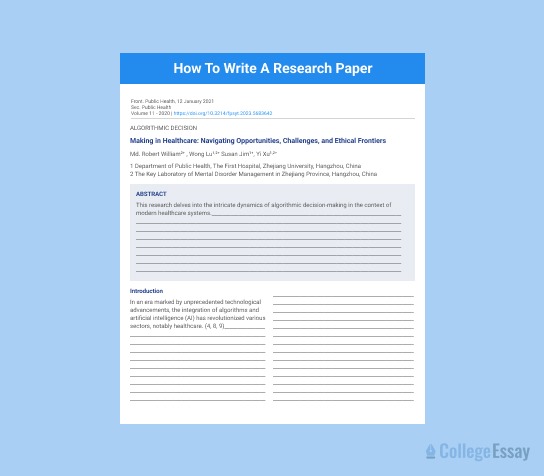
OFF ON CUSTOM ESSAYS
Legal & Policies
- Privacy Policy
- Cookies Policy
- Terms of Use
- Refunds & Cancellations
- Our Writers
- Success Stories
- Our Guarantees
- Affiliate Program
- Referral Program
- AI Essay Writer
Disclaimer: All client orders are completed by our team of highly qualified human writers. The essays and papers provided by us are not to be used for submission but rather as learning models only.
- Research Paper Guides
- Basics of Research Paper Writing
- How to Write an Abstract for a Research Paper: Writing Guide & Examples
- Speech Topics
- Basics of Essay Writing
- Essay Topics
- Other Essays
- Main Academic Essays
- Research Paper Topics
- Miscellaneous
- Chicago/ Turabian
- Data & Statistics
Methodology
- Admission Writing Tips
- Admission Advice
- Other Guides
- Student Life
- Studying Tips
- Understanding Plagiarism
- Academic Writing Tips
- Basics of Dissertation & Thesis Writing
- Essay Guides
- Formatting Guides
- Basics of Research Process
- Admission Guides
- Dissertation & Thesis Guides
How to Write an Abstract for a Research Paper: Writing Guide & Examples

Table of contents
Use our free Readability checker
An abstract is a brief summary of a research paper that is usually between 150 and 250 words in length. The purpose of the abstract is to provide a concise overview of the research paper's main questions, scope, methodology, findings, and conclusions. The abstract is usually located at the beginning of the paper, after the title page and before the main body of the text. It serves as a preview, and can be useful for readers who want to quickly determine whether the paper is relevant to their interests.
This guide describes all the key parts of this crucial segment and demonstrates how to write an abstract for a research paper . Research abstract examples and tips are also offered to help you create this section effectively.
What Is an Abstract in a Research Paper?
First, let’s cover what is an abstract in research. A research paper abstract is a synopsis of your full study. Specifically, writing an abstract involves extracting the main aspects of your work in a given order. These components include your study purpose and study questions, design, main findings, interpretation, and conclusion. Based on this summary, readers will decide whether to look at the rest of your project. Hence, you must include sufficient key information as this makes the abstract of a research paper useful to your audience or professor. To determine if you have included adequate data, imagine yourself as a researcher conducting an investigation. Consider an abstract as the only section, and think about how much information you provided. Are you satisfied with it? Does it describe your study adequately? Revise your writing accordingly. But don’t be confused. An abstract is a self-contained text, not a part of a research paper introduction . Remember that scientific paper abstracts must highlight your manuscript’s selling point and lure a reader to go through it. At first, it may sound difficult. But this guide will reveal every essential writing step. Alternatively, you can also contact StudyCrumb and pay to write research paper to avoid any further individual work.
What Is the Purpose of an Abstract?
The aforementioned definition demonstrates why abstract writing is important. Nevertheless, it is also necessary to understand the purpose of an abstract in a research paper. Well-written abstracts serve multiple objectives. For example, they communicate your key findings and allow readers to make an informed decision about how relevant your article is based on their interests and whether they should consider it. Reading an abstract of a scientific paper also prepares reviewers to grasp the key points and follow your detailed points and analyses. Another purpose of an abstract is for classification. Online libraries or journal databases, and search engines use abstracts for indexing published works. This allows users to retrieve what they are looking for quickly rather than reading full texts. Thus, a good abstract must include several key terms that potential readers would use for searching, as this makes discovering your work easy.
How Long Is an Abstract?
An abstract is perhaps the only section of your manuscript that is limited regarding how many words you can use. In general, it is usually limited to 150 and 300 words. However, for research paper abstract, most guidelines stick to the range of 200 and 250 words both for simple or small manuscripts and specific types of papers such as theses or dissertations. This restriction should not be exceeded no matter what. However, how long your abstract can be is influenced by the assignment instructions. Thus, it is essential to comply with any guidelines about the abstract length.
What Makes a Good Abstract for a Research Paper?
While the length aspect is vital, it is also essential to write a good abstract. This entails providing an honest and complete synopsis of your work through a coherent flow of ideas. An abstract in a paper should also be self-contained without the need for readers to peruse other parts for further information. Therefore, knowing how to write an effective abstract for a research paper can make a difference. Here are elements that make a good abstract for a research paper:
- Use one finely written, concise, and coherent paragraph that stands individually as an information unit.
- Add all the basic academic features of your manuscript, including background, objective, focus, method, findings/results, and conclusion.
- Do not write about information not covered in your document.
- Ensure the section is understandable to a wide audience and your subject-specific readers.
- Focus on issues instead of people.
- Develop it with the language of your main paper in a simple format for general readers.
- Put it just after your title page.

When to Write an Abstract?
Lengthy texts such as scholarly manuscripts usually require students to write an abstract section. You might also need to write an abstract for a scientific paper when:
- Submitting reports to journals for publication or peer review.
- Working on a book chapter proposal.
- Applying for research grants.
- Completing conference paper proposals.
- Composing book proposals.
- Writing theses or dissertations.
For undergraduates, you may be required to include an abstract in a research paper for others who have not read your main manuscript. Regardless of the type of work you are dealing with, it is necessary to draft your abstract after completing writing, as this enhances accuracy and conformity with other segments of a report.
What to Include in an Abstract of a Research Paper?
Another crucial aspect that you must consider is the structure of an abstract. Good abstracts are well-organized, which makes them more informative. Scientific guidelines emphasize the IMRad format as a standard way of unifying this section. The parts of an abstract in a research paper based on this system consist of:
Introduction
- Discussion.
Do not forget to balance all your sections properly regarding methods included under each heading. Using this setup allows you to write a helpful, concise, and easy-to-understand abstract of a paper. Nonetheless, some instructions may necessitate additional subheadings, particularly works such as clinical trials, observational studies, case studies, and meta-analyses. Hence, you should be attentive to your task requirements.

Sounds like you'll need lots of time to do it all properly? Use the best college paper writing service to avoid any trouble.
As the first section, an introduction reveals to readers what your work is about. Consequently, you should know how to start an abstract by writing a good beginning segment. Here, describe the scope, question/hypothesis, main objectives, and rationale for your study. In most cases, you can frame this part in 2-3 sentences. Each of them should describe a specific point to maximize word use. The introduction to an abstract part of a paper offers a background to your investigation, which should smoothly lead to an explanation of the methods that were used. Be careful here because writing an abstract for a research paper containing a lengthy introduction takes up space for other important sections. This affects the quality of an abstract in a scientific paper. Therefore, ensure that you provide brief, specific, and relevant information that keeps readers interested. Look at this example of an abstract introduction:
The present study explored the effect of technology in enhancing employment opportunities today. The benefits of technology have been examined in exploratory and descriptive studies. Nevertheless, no study has considered how technology increases employment opportunities.
Here are some more examples of how to begin your abstract.

Methodology in research is usually the second longest part of your abstract paragraph. The focus here is on providing adequate information about what you did and how. Specifically, give essential facts about your study design, setting, sample, data collection and analysis instruments, measures, and parameters. The methodology part is vital as you write the abstract section of a research paper because it helps in verifying your manuscript’s credibility. An editor will ignore an abstract missing a methods section or that does not have a clear explanation. Therefore, practice caution and professionalism when writing this unit by including enough details and conveying the maximum quantity of information with few words. If you are unsure of how to organize this segment, consider this example of a good abstract methodology:
This study used a qualitative exploratory design in which data was collected from existing studies and documents. A sample of 120 peer-reviewed works and documents were analyzed using an interpretive paradigm.
This section is about what you found after conducting your research. It is an indispensable and longest part of a research abstract because anyone reading intends to gain insights into your study findings or which data your investigation uncovered. Therefore, avoid compromising its quality by ensuring that you include as much factual information about your results as the word count allows. Drafting the results of an abstract for research papers is not easy. However, the details you should express here include the number of participants, outcomes of your analysis, and actual data such as numbers or mean, etc. Remember to be descriptive and prioritize fresh and substantiated findings contradicting previous studies. Also, indicate any limitations regarding your results’ reliability and accuracy. Look at this sample abstract results:
Nine studies did not meet the research criteria and were excluded. An analysis of the remaining 91 studies revealed five major themes, including ease of skills acquisition, work-at-home opportunities, globalization, digital marketing, and increased networking.

This is a part of the abstract structure where you divulge what readers can take home from your work or what your results mean based on how you interpreted the issue. Use a few but precise sentences to highlight the findings relating to what your study was about. You should also mention any unexpected or important outcomes. Additionally, you can offer a personal judgment regarding the practical or theoretical implications of your results or how significant they are for the study field as a whole. While conclusions are very short parts of an abstract, they are the most impactful on average audiences since readers usually believe authors and consider their views reliable. For this reason, ensure that you are honest when writing an abstract in research by limiting your claims to what your data exposes. Here is an example of a scientific abstract conclusion:
Technology has a positive effect on employment as it creates more job opportunities through remote work. It also enables people from any part of the world to learn essential skills, which enhances their job prospects.
Check our guide on creating a concluding section if you want to know more information on how to write a conclusion for a research paper .
An abstract for research paper must also contain a range of keywords. These are important words or phrases that act as search terms for finding your work quickly. Therefore, in addition to knowing how to write an abstract for a research paper and what to write in an abstract, you should understand how to include useful keywords that capture essential aspects of your manuscript. Think about how you can find your work online. Which words or a combination of them will be typed in a search box? You should use those terms. Acronyms such as OCD, meaning obsessive-compulsive disorder, may also be included. While you are not limited regarding the number of keywords to be used, it is recommended to include 3-5 keywords. Keep in mind that the research abstract format for keywords is a separate line beginning with an indention, like a paragraph below your abstract. Indicate it by italicizing the word Keywords followed by a colon and space look like this:
Keywords: international marketing, globalization, medium-size businesses, B2B, adaptation.
Do not italicize your terms.
How to Write a Research Paper Abstract Step-By-Step
Shrinking a manuscript that you have prepared for several days, weeks, or months into a 300-word paragraph can be challenging when preparing the abstract. However, you can follow specific tricks on how to write an abstract for a paper to address the difficulty. Before you begin, you must consider the instructions provided carefully concerning aspects such as spacing, fonts, word limit, and subheadings. In this section, you will learn how to write a good abstract for a research paper step by step.
1. Explain Your Research Purpose
Students usually start an abstract for a research paper by identifying the study's purpose. Here is where you consider the reasons for conducting your research. For example, if your study problem is about technology and employment, so what? Why should readers care about your topic? In this part of the abstract, you can describe what was solved or why you feel your topic is relevant. Use this section to inform readers about your key argument, as it helps in generating a good abstract for a research paper. Remember to be descriptive by explaining the difficulties of your topic or gaps in knowledge you will address and how your investigation will affect the issue. Consider triggers such as why you conducted your research, how you performed it, what you found, the significance of your study and its results, and why others should read your paper.
2. Define a Research Problem
The next step towards writing a good abstract involves explaining the central issue or problem statement behind your investigation or that your paper addresses. Remember, you first identified your purpose, so build on that by focusing on one key problem. Abstracts for scientific papers usually include this section to demonstrate the scope of a manuscript. Avoid using too much jargon here by making it easy for your readers to see your main message. If your abstract does not include the primary question, then you do not understand why you are conducting your study. Remember that when writing a research abstract, your purpose and problem form the backbone of the work. Thus, do not leave this step until you have one concise study problem.
3. Introduce Your Research Approach
After identifying your research problem, you now need to explain how you addressed it in this part of an academic abstract. In other words, how did you conduct your study following your key problem? When writing an abstract for a paper, let your audience know what you did exactly to get to the findings. Abstract in research paper may include approaches such as experimentation, case study, document analysis, or simulation. You must also highlight the extent of a manuscript, such as how many documents were analyzed and which variables were used. While this section of an abstract for a paper may require a long sentence, ensure that anyone can read it without needing to pause in the middle.
4. Discuss Results
After clarifying your approach, your study abstract must disclose what was found. What is the solution to your research problem? Did you confirm your hypothesis? Remember to be direct, detailed, and clear. Specifically, writing a scientific abstract requires that you describe your results in exact numbers or percentages. This allows you to create an abstract of research paper that cannot be misinterpreted easily. Also, avoid vague words such as “significant”, “large”, “very”, or “small.” In this section, an abstract in a research paper should not include exaggerations or create expectations that your manuscript cannot fulfill. Rather, the focus should be on your most important findings to engage readers. However, do not attempt to fit all your results in this part.
5. Wrap Up Your Scientific Paper Abstract
You should also conclude an abstract after completing the aforementioned steps. This enables you to finish up a research paper abstract and end it. Here, describe what your results mean and why your overall work is important. Mention what the answer to your research problem implies and identify if it is specific or general. For example, are your results generalizable to a wider population or selected groups? When creating an abstract, describe why your readers should care about your results rather than re-stating the findings. What can people do with your study? As stated previously, an abstract is a brief summary in the beginning of a research paper or any other scientific work. Read our guide on how to write an abstract for a research paper and how to structure it for more explanation.
Research Paper Abstract Examples
As you can see, constructing an abstract is not difficult if you follow the above-mentioned steps. You can now compose your own one easily. Nonetheless, if you are still confused or unsure whether you are on the right path, feel free to look at different examples of an abstract for a research paper. You can also consider these three examples of abstracts in research papers and use one of them as a draft for your work. Need a research proposal example ? You will find it in one more blog on our platform. Research paper abstract example 1

Abstract page example 2

Example of an abstract for a research paper 3

Research Paper Abstract Format
Another important consideration is complying with the specified abstract writing format to avoid any confusion on how this section should be completed. Your layout depends on the citation style being used. Specifically, the main styles, such as APA, MLA, and Chicago, have individual rules regarding how to format an abstract in a research paper. However, to make it simple, an abstract template is usually provided to help you with the organization. In general, observe and stick to your paper’s requirements.
Extra Tips for Writing an Abstract
Writing an abstract for a research paper should not be a complex process. You already have a good idea about how to make an abstract after reading the previous sections. Remember that writing this segment is an essential part of your work because it prefaces the entire manuscript. Still, it is usually the last segment of your project to be written, which means that you should summarize your research easily. However, this can be a daunting undertaking for some students. Below are additional abstract writing tips and guidelines to help you.
Draw Inspiration From Research Paper Abstracts Examples
Even if you follow this article’s guidelines, without writing practice, it can be difficult to create good abstracts. Therefore, if you are still struggling to write, you can draw inspiration from sample abstracts. These can be found in peer-reviewed articles or course books in your school library or from online databases. Focus on samples from your study field e.g., science abstracts examples if you are into the sciences or those for social sciences if it is your field. Seek assistance from your professor to ensure that you consider a good abstract paper example. Another option is reading how to write an abstract example segment, as this offers you a quick refresher on composing abstracts.
Prepare an Abstract Outline
It is also essential to write a research abstract outline if you have not done so already. Creating an outline will help you write your actual abstract paper efficiently. Make sure to place your key argument at the top before reading each subheading of your manuscript as a starting point. Write one-sentence summaries of your main sections as you read in the order that they appear in your work. Also, do not forget to summarize your conclusion. What goes in an abstract, however, is limited. For example, the literature review cannot be included. Rather, you can state in a sentence how your work fits into the wider academic discourse.
Write Abstract From the Ground Up
While your abstract is a synopsis, you should write it from scratch and as a completely different part of your manuscript. Copying and pasting quotes or paraphrasing sentences should be avoided. Use new phrases and vocabulary instead when writing this section to keep it engaging and free of redundant words or sentences. Read how to write abstract for research paper for more clarification about what you should include.
Make Your Research Abstract Concise
Ensure that your research paper abstract is clear, concise, and coherent. It should be no more than 200-250 words. If it is longer, cut it down where necessary. Since readers just want to get the overall view of your claim, you can exclude unimportant information and construct brief sentences. This is how to write a paper abstract:
- Include essential information found in the paper only
- No exaggerations or inclusion of new ideas
- No use of abbreviations that are found only in the body because the abstract should be self-contained
- No dwelling on previous studies since this is a synopsis of your report.
Mistakes to Avoid When You Write an Abstract for a Research Paper
Even if you know how to write research abstract, check it several times to ensure that what you included agrees with your manuscript content completely. Avoid these common mistakes:
- Research paper abstracts should not include catchy phrases or quotes focused on grabbing your readers’ attention.
- Do not use direct acronyms because they require further explanation to help readers understand.
- Citing other studies is not needed.
- Do not use confusing/unnecessary terms or obscure jargon, as the general audience may not understand them.
- A scientific paper abstract should not be too specific. Rather, consider a wider overview of your paper.
- Do not include long quotations, figures, or tables. They take up precious space, and your audience does not need them.
Bottom Line on How to Write a Research Abstract
This guide discussed extensively how to write the abstract of a research paper. Reaching this section means that you now understand what is an abstract in writing. The article also provided several abstract writing examples to help you grasp the described ideas. It is your turn now to develop a nice abstract by applying what you have learned. Do not fret if you are still confused or cannot recall some points. You can just re-read a section to fully understand all concepts.
Our professional writers can compose a top-notch abstract or any other section of a research paper. You can also easily ask for comprehensive assistance with any task and get excellent work strictly according to your deadlines.
FAQ About How to Write an Abstract
1. what is an abstract.
An abstract is a takeaway from your research. Specifically, abstracts are standalone sections that describe an issue, techniques utilized in exploring the issue, and the outcome of these procedures. While each study field specifies what to include in this section, it should be a concise synopsis of your work.
2. Where does an abstract go in a research paper?
Place your research paper abstract at the beginning of your work immediately after a title page and before your table of contents. However, some manuscripts have an acknowledgments section. Here, your abstract appears after that part. It should also be on its page and in a single paragraph.
3. Do you write an abstract first or last?
Even though it appears at the top of your work, ensure that you write an abstract last after completing your research paper since it involves abstracting contents from your manuscript. This allows you to align this section with other parts, such as the title, introduction, and background.
4. Do I need to cite references in a research paper abstract?
It is usually inappropriate to include any reference within abstracts because this section should demonstrate original research. The abstract of a research paper must include a description of what you did in your paper, what you argued, and what you found. You will cite specific sources in your manuscript’s body.
5. What should not be included in an abstract?
These are what you shouldn’t include in the abstract of a research paper:
- Long sentences
- Excessive details or lengthy contextual information
- Filler words, redundant phrases, and repetitive information
- Incomplete sentences
- New information not found within your main text.
6. What tense should I use when writing an abstract?
Write an abstract using active voice. However, a substantial part of this segment may need passive sentences. Nonetheless, use concise and complete sentences when writing your abstract. Specifically, get to your point quickly and focus mostly on the past tense since you are reporting completed research.

Joe Eckel is an expert on Dissertations writing. He makes sure that each student gets precious insights on composing A-grade academic writing.
You may also like

Purdue Online Writing Lab Purdue OWL® College of Liberal Arts
APA Sample Paper

Welcome to the Purdue OWL
This page is brought to you by the OWL at Purdue University. When printing this page, you must include the entire legal notice.
Copyright ©1995-2018 by The Writing Lab & The OWL at Purdue and Purdue University. All rights reserved. This material may not be published, reproduced, broadcast, rewritten, or redistributed without permission. Use of this site constitutes acceptance of our terms and conditions of fair use.
Note: This page reflects the latest version of the APA Publication Manual (i.e., APA 7), which released in October 2019. The equivalent resource for the older APA 6 style can be found here .
Media Files: APA Sample Student Paper , APA Sample Professional Paper
This resource is enhanced by Acrobat PDF files. Download the free Acrobat Reader
Note: The APA Publication Manual, 7 th Edition specifies different formatting conventions for student and professional papers (i.e., papers written for credit in a course and papers intended for scholarly publication). These differences mostly extend to the title page and running head. Crucially, citation practices do not differ between the two styles of paper.
However, for your convenience, we have provided two versions of our APA 7 sample paper below: one in student style and one in professional style.
Note: For accessibility purposes, we have used "Track Changes" to make comments along the margins of these samples. Those authored by [AF] denote explanations of formatting and [AWC] denote directions for writing and citing in APA 7.
APA 7 Student Paper:
Apa 7 professional paper:.

Research Paper Thesis
Ai generator.

In the realm of academic writing, a well-structured research paper thesis is a cornerstone. This article provides a comprehensive guide on crafting a research paper thesis, with over 21 examples in various formats such as PDF, Word, and Google Docs. We will also delve into the step-by-step process of writing a research paper thesis, answer some frequently asked questions, and provide links to related articles for further reading.
1. Research Paper Thesis
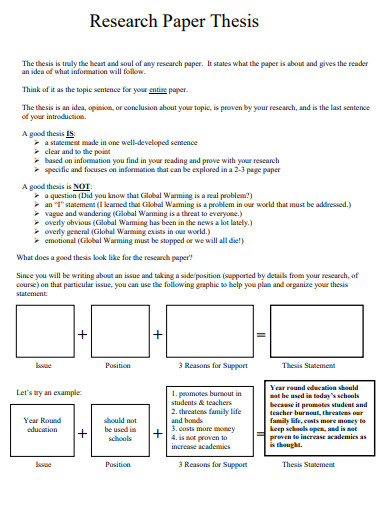
Size: 146 KB
2. Sample Research Paper Thesis
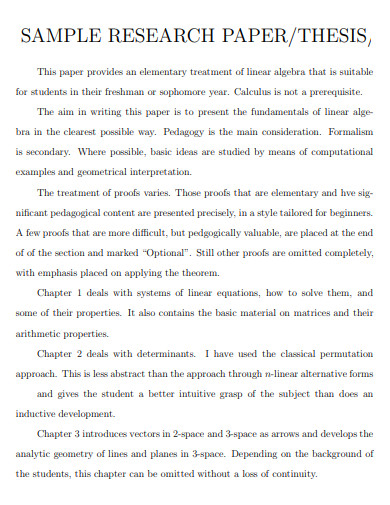
Size: 93 KB
3. Guidelines for Research Paper Thesis
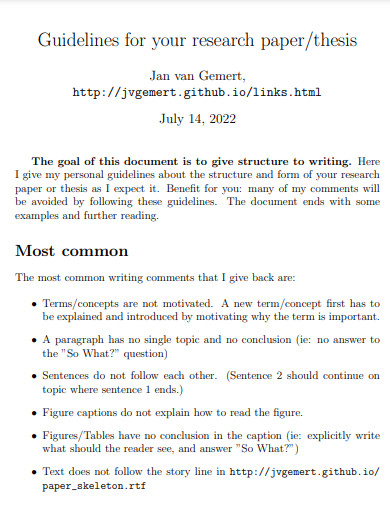
Size: 99 KB
4. Environmental Science Research Paper Thesis

Size: 558 KB
5. University Research Paper Thesis
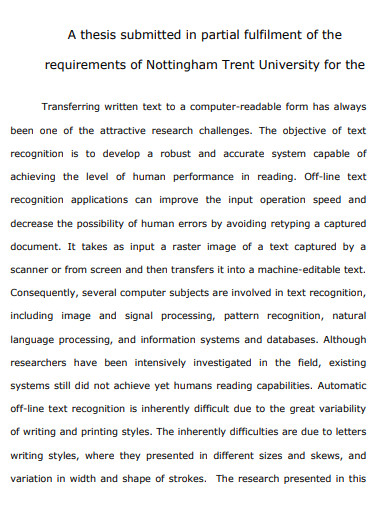
6. Research Paper Topic Sentence Thesis
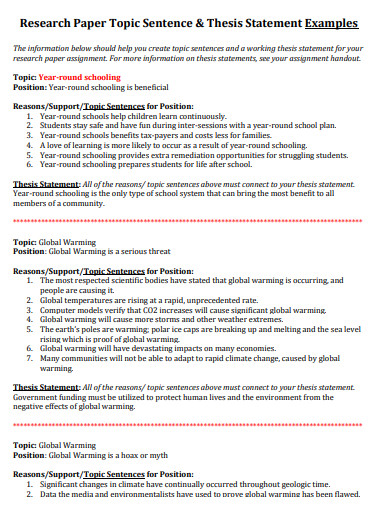
Size: 435 KB
7. Writing Research Paper Thesis
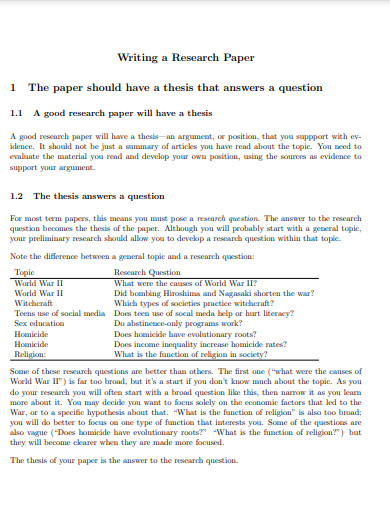
Size: 66 KB
8. Key Points for Research Paper Thesis
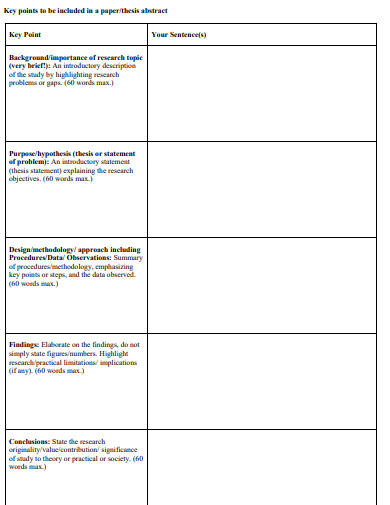
Size: 79 KB
9. Research Paper Organization Thesis
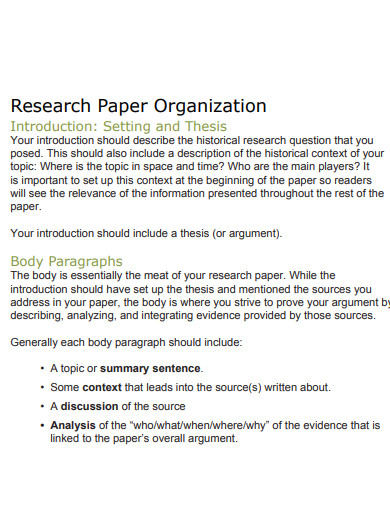
Size: 283 KB
10. Research Paper PhD Thesis
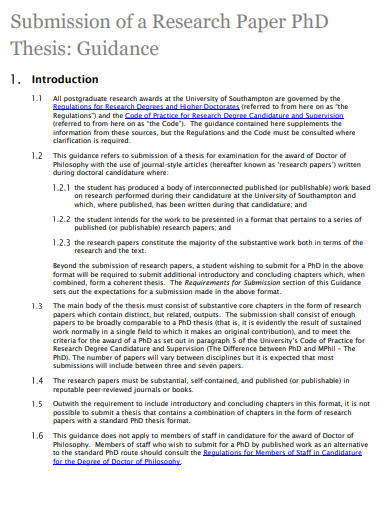
Size: 133 KB
11. Thesis Driven Research Paper
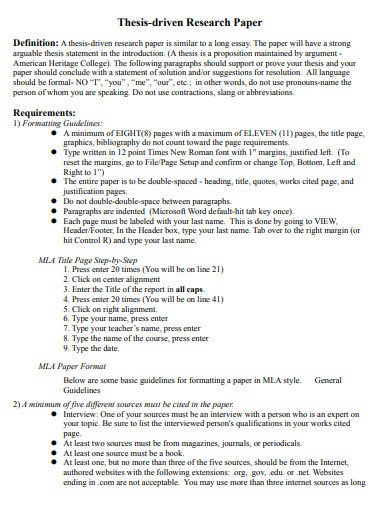
Size: 94 KB
12. Handbook Research Paper Thesis
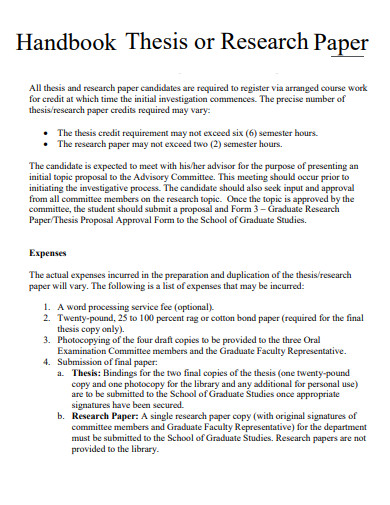
Size: 700 KB
13. Declaration of Research Paper Thesis
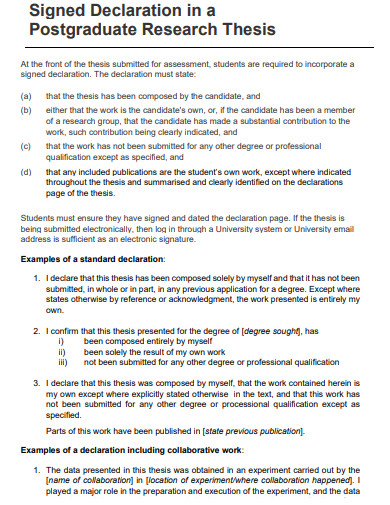
Size: 157 KB
14. Research Paper Thesis Statement
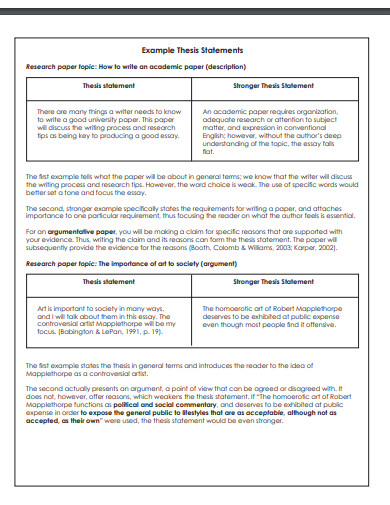
Size: 140 KB
15. Research Paper MA Thesis
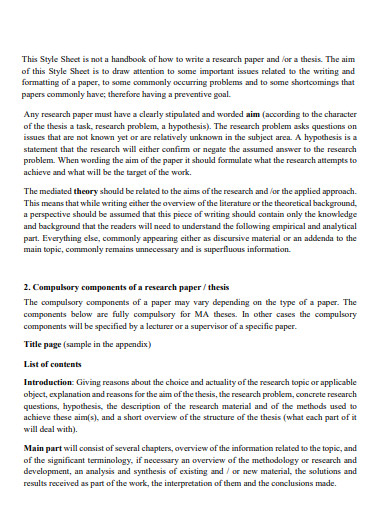
Size: 359 KB
16. Simple Research Paper Thesis
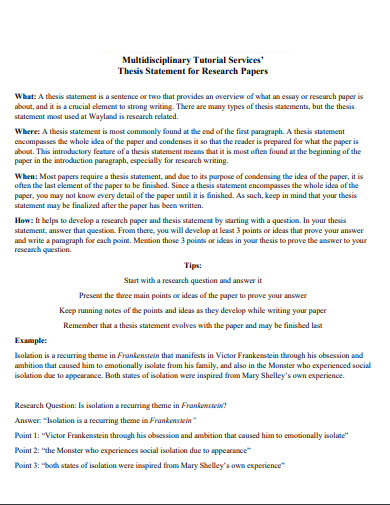
Size: 12 KB
17. Research Paper Thesis Outline
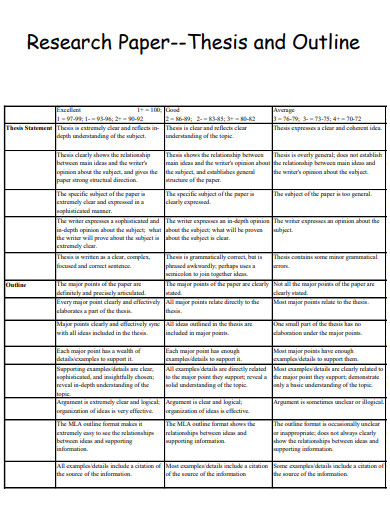
Size: 24 KB
18. Research Paper Thesis Proposal
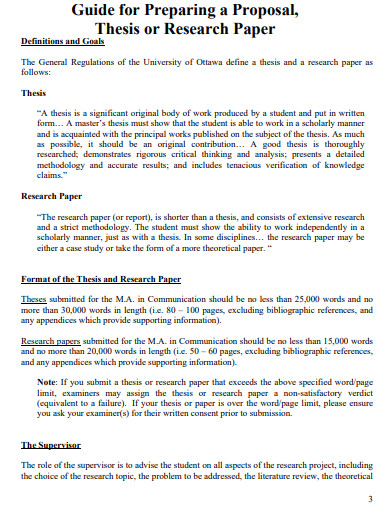
Size: 198 KB
19. Graduate Research Paper Thesis
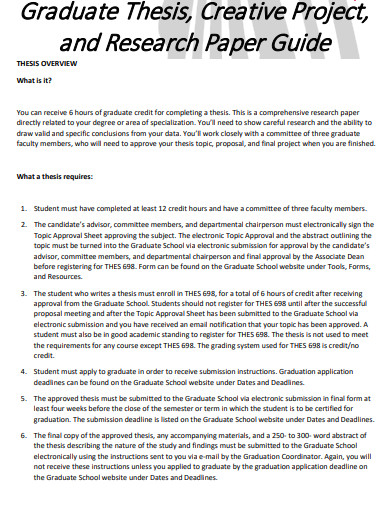
Size: 454 KB
20. Research Paper Thesis Important Points
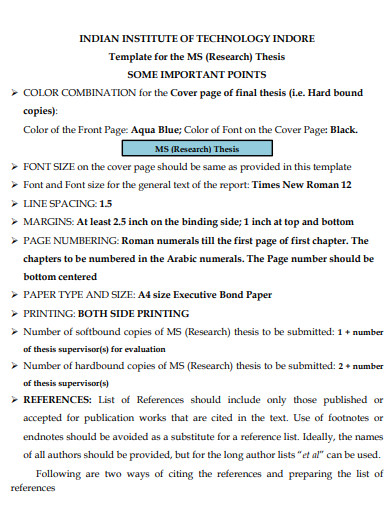
Size: 321 KB
21. Theoretical Research Paper Thesis
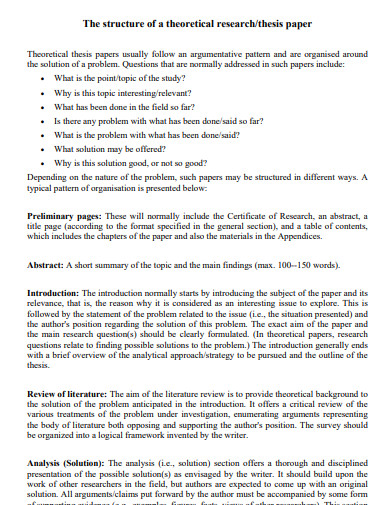
Size: 15 KB
22. Research Paper Thesis Checklist
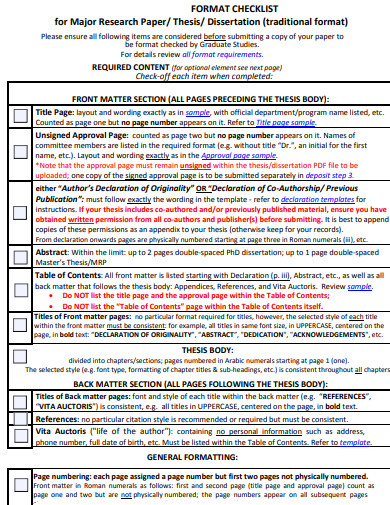
What is a Research Paper Thesis?
A research paper thesis is a concise statement that articulates the central argument or claim of your research paper. It serves as a roadmap, guiding the direction of your paper and keeping your argument focused. It is typically located at the end of the introduction section.
How to Write a Research Paper Thesis
Before we delve into the steps of creating a research paper thesis, it’s essential to understand its importance. A well-crafted thesis statement can make your research paper more effective and impactful.
Step 1: Understand your research topic:
Before you can write a thesis statement, you need to have a clear understanding of your research topic. This involves conducting preliminary research and identifying the key issues or questions related to your topic.
Step 2: Formulate your argument:
Based on your understanding of the topic, formulate a clear and concise argument that your research paper will explore.
Step 3: Write the thesis statement:
Your thesis statement should clearly articulate your argument. It should be specific, concise, and arguable. For more guidance, refer to our article on ‘ 26+ Research Paper Introduction Examples in PDF, Word, Google Docs, Apple Pages ‘.
Step 4: Revise and refine:
As your research progresses, you may need to revise and refine your thesis statement to ensure it accurately reflects the content of your paper.
What is a research paper thesis?
A research paper thesis is a concise statement that articulates the central argument or claim of your research paper.
How do I write a research paper thesis?
To write a research paper thesis, you need to understand your research topic, formulate your argument, write the thesis statement, and revise and refine as necessary.
Where can I find examples of research paper theses?
You can find examples of research paper theses in our ’21+ Research Paper Thesis Example in PDF, Word, Google Docs’ article.
In conclusion, a well-crafted research paper thesis is crucial for an effective and impactful research paper. By following the steps outlined in this guide and utilizing the provided examples, you can create a strong thesis statement that guides your research and strengthens your argument. For more information, check out our articles on ‘ 26+ MLA Research Paper in PDF ‘, ‘ 24+ Research Paper Abstract Examples in Word, Google Docs, PDF ‘, ‘ Research Paper Format ‘, ‘ 10+ Research Paper Checklist Examples [College, Grading, School ]’, ‘ 10+ APA Research Paper Examples ‘, ‘ Chicago Style Paper ‘, ‘ MLA Paper Format ‘, ‘ Research Design ‘, and ‘ 10+ Research Outline Examples in MS Word | PDF ‘.
Text prompt
- Instructive
- Professional
10 Examples of Public speaking
20 Examples of Gas lighting

IMAGES
VIDEO
COMMENTS
Learn how to write an abstract for a thesis, dissertation or research paper using the IMRaD structure. See an example of an abstract from a humanities thesis and get tips for writing your own.
Learn how to write a short summary of your research paper that includes key information and serves multiple purposes. See examples of abstracts from different disciplines and learn how to choose verb tenses.
Informative Abstract Example 1. Emotional intelligence (EQ) has been correlated with leadership effectiveness in organizations. Using a mixed-methods approach, this study assesses the importance of emotional intelligence on academic performance at the high school level. The Emotional Intelligence rating scale was used, as well as semi ...
A research paper abstract is the face of the research paper. This means that it is what creates the first impression of the paper. It is the summary of the research paper and communicates the content quality and relevance. They exist with one vital purpose, and that is to sell your research. A reader quickly scrutinises and scans the abstract ...
Learn what an abstract is, what it should include, and how to write one for your research paper or book proposal. See examples of abstracts and tips for editing and improving your writing.
Learn how to write and format an APA abstract for your research paper. See an example of an abstract that summarizes the problem, methods, results, and implications of a study.
An APA abstract summarizes, usually in one paragraph of between 150-250 words, the major aspects of a research paper or dissertation in a prescribed sequence that includes: The rationale: the overall purpose of the study, providing a clear context for the research undertaken.
Research Paper Abstract Examples could be following: Example 1: Title: "The Effectiveness of Cognitive-Behavioral Therapy for Treating Anxiety Disorders: A Meta-Analysis". Abstract: This meta-analysis examines the effectiveness of cognitive-behavioral therapy (CBT) in treating anxiety disorders. Through the analysis of 20 randomized ...
Learn how to write an abstract for your research paper, including the definition, purpose, types, characteristics, and structure. See examples of informative and descriptive abstracts for different fields of study.
It provides an overview of the paper and helps readers decide whether to read the full text. Limit your abstract to 250 words. 1. Abstract Content . The abstract addresses the following (usually 1-2 sentences per topic): • key aspects of the literature review • problem under investigation or research question(s) • clearly stated ...
An abstract in research is a summary of the paper and describes only the main aspects. Typically, abstracts are about 200-350 words long. Abstracts are of four types—structured, unstructured, descriptive, and informative. Abstracts should be simple, clear, concise, independent, and unbiased (present both favorable and adverse outcomes).
The abstract of a paper is the only part of the paper that is published in conference proceedings. The abstract is the only part of the paper that a potential referee sees when he is invited by an editor to review a manuscript. The abstract is the only part of the paper that readers see when they search through electronic databases such as PubMed.
These sample papers demonstrate APA Style formatting standards for different student paper types. Students may write the same types of papers as professional authors (e.g., quantitative studies, literature reviews) or other types of papers for course assignments (e.g., reaction or response papers, annotated bibliographies, discussion posts), dissertations, and theses.
Jan 2, 2021. Writing an Abstract for a Research Paper: Guidelines, Examples, and Templates. There are six steps to writing a standard abstract. (1) Begin with a broad statement about your topic. Then, (2) state the problem or knowledge gap related to this topic that your study explores. After that, (3) describe what specific aspect of this ...
The abstract of your paper provides a quick rundown of the aim, method, and results of your research. See how to write an effective research abstract by exploring several examples.
The abstract is a vital part of any research paper. It is the shop front for your work, and the first stop for your reader. It should provide a clear and succinct summary of your study, and encourage your readers to read more. ... Example Abstract 2: Engineering Development and validation of a three-dimensional finite element model of the ...
The typical abstract includes these elements: A statement of the problem and objectives. A statement of the significance of the work. A summary of employed methods or your research approach. A summary of findings or conclusions of the study. A description of the implications of the findings. Regardless of field, abstract authors should explain ...
Step 2: Outline Your Methods Clearly. Outline the research methods and experimental design employed in your study. Refrain from evaluating the validity or challenges of your methodology. Provide a clear description of how you conducted your research, including any specific techniques, tools, or procedures used.
Example of an abstract for a research paper 3. Research Paper Abstract Format. Another important consideration is complying with the specified abstract writing format to avoid any confusion on how this section should be completed. Your layout depends on the citation style being used. Specifically, the main styles, such as APA, MLA, and Chicago ...
Crucially, citation practices do not differ between the two styles of paper. However, for your convenience, we have provided two versions of our APA 7 sample paper below: one in student style and one in professional style. Note: For accessibility purposes, we have used "Track Changes" to make comments along the margins of these samples.
The abstract: "This quantitative research study was conducted to illustrate the relationship (s) between social media use and its effect on police brutality awareness. In 2015, social media was used to assist in revealing an act of impulsive police brutality on an adult black woman in Waller County, Texas.
Step 3: Get the Gist. The third and final paragraph will be the gist of your research paper. This includes the heart or the main part, the findings and the conclusion. The gist has to be a general summary of your research paper. It should have the facts that support it, the findings of your research and the hypothesis.
In the realm of academic writing, a well-structured research paper thesis is a cornerstone. This article provides a comprehensive guide on crafting a research paper thesis, with over 21 examples in various formats such as PDF, Word, and Google Docs. We will also delve into the step-by-step process of writing a research paper thesis, answer some ...